1st October Weekend in Osijek Was Full of Life - Trust Us, Head On East
October 2, 2022 - Osijek is too much fun. The 4th largest city in Croatia and the regional centre of eastern Croatia lives the good life. The IT scene is booming, new things keep popping up, and cultural events are ever-present. The autumn months are especially exciting. During the day, you can still chill in the sun by the Drava, and in the evening, walk through one of Osijek's many parks, picking up wild chestnuts. Or you can enjoy them as a snack if you buy them roasted from the legendary carts. And on late September / early October weekends, now traditionally, you don't even need to ask what everyone is doing. Just Head On East.
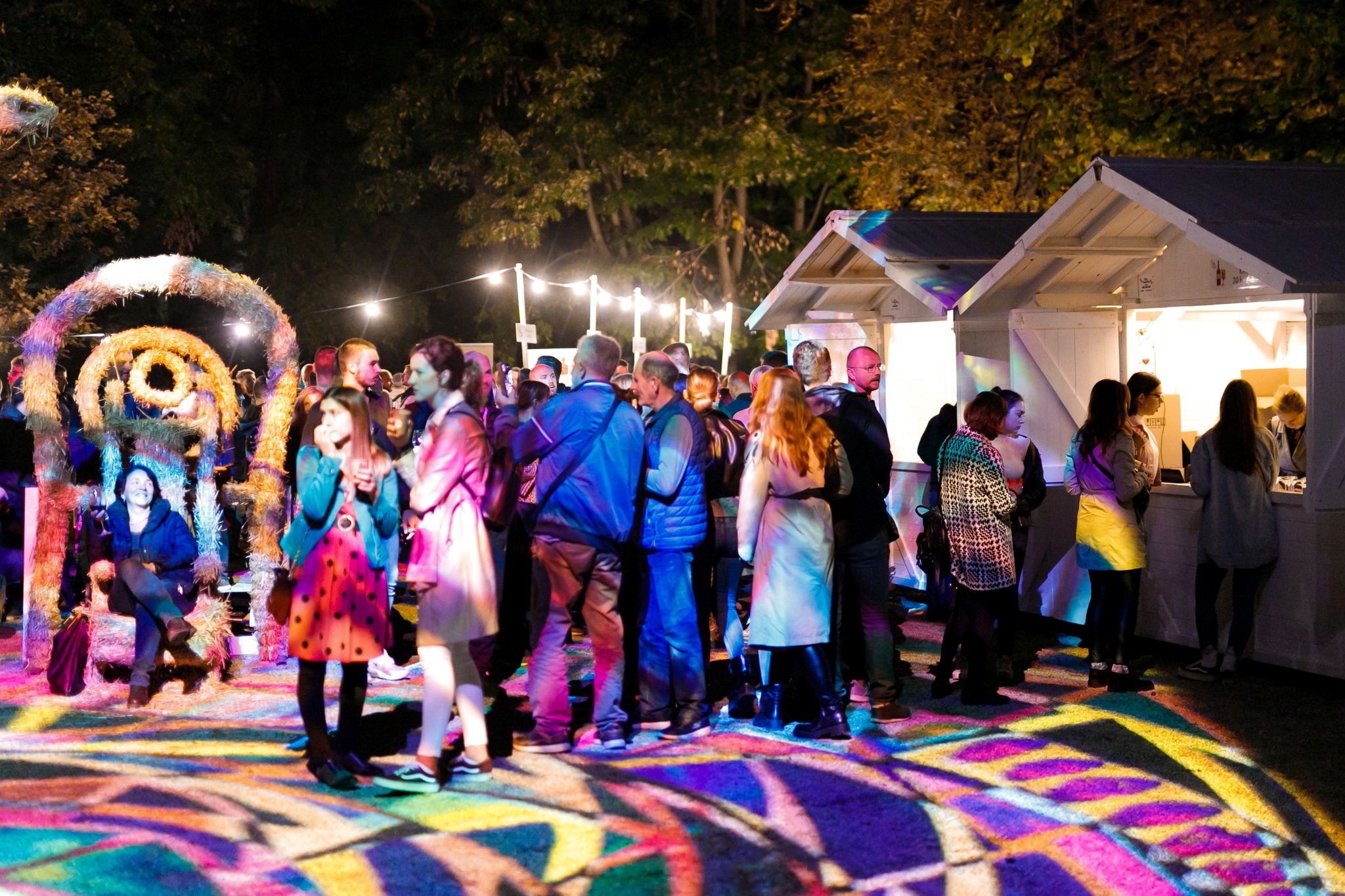
This festival, as the name suggests, celebrates hedonism in the east. And does it shine brightly here. The organisers included the Osijek-Baranja County Tourist Board, the Osijek-Baranja County, the City of Osijek, and many of the city's institutions - schools, libraries, museums, and associations. It felt like all of Osijek just came together to create an unforgettable experience. And we don't say that lightly.
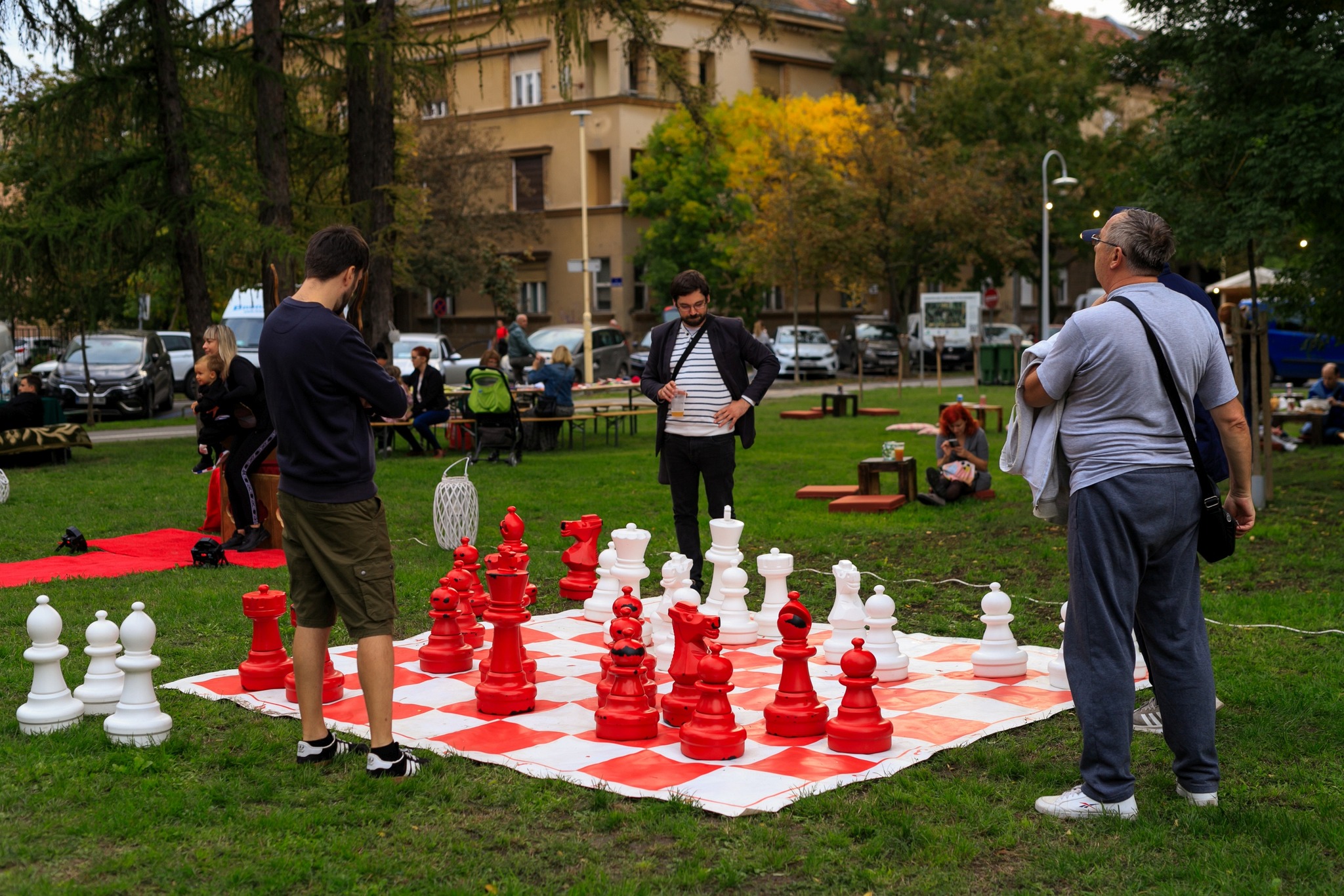
The organisers thought of everything and made sure to accommodate all ages and personal definitions of hedonism. Whether that is food, fine wine, beautiful art and light installations, or good music, you could spend the entire weekend living in Osijek's royal parks.
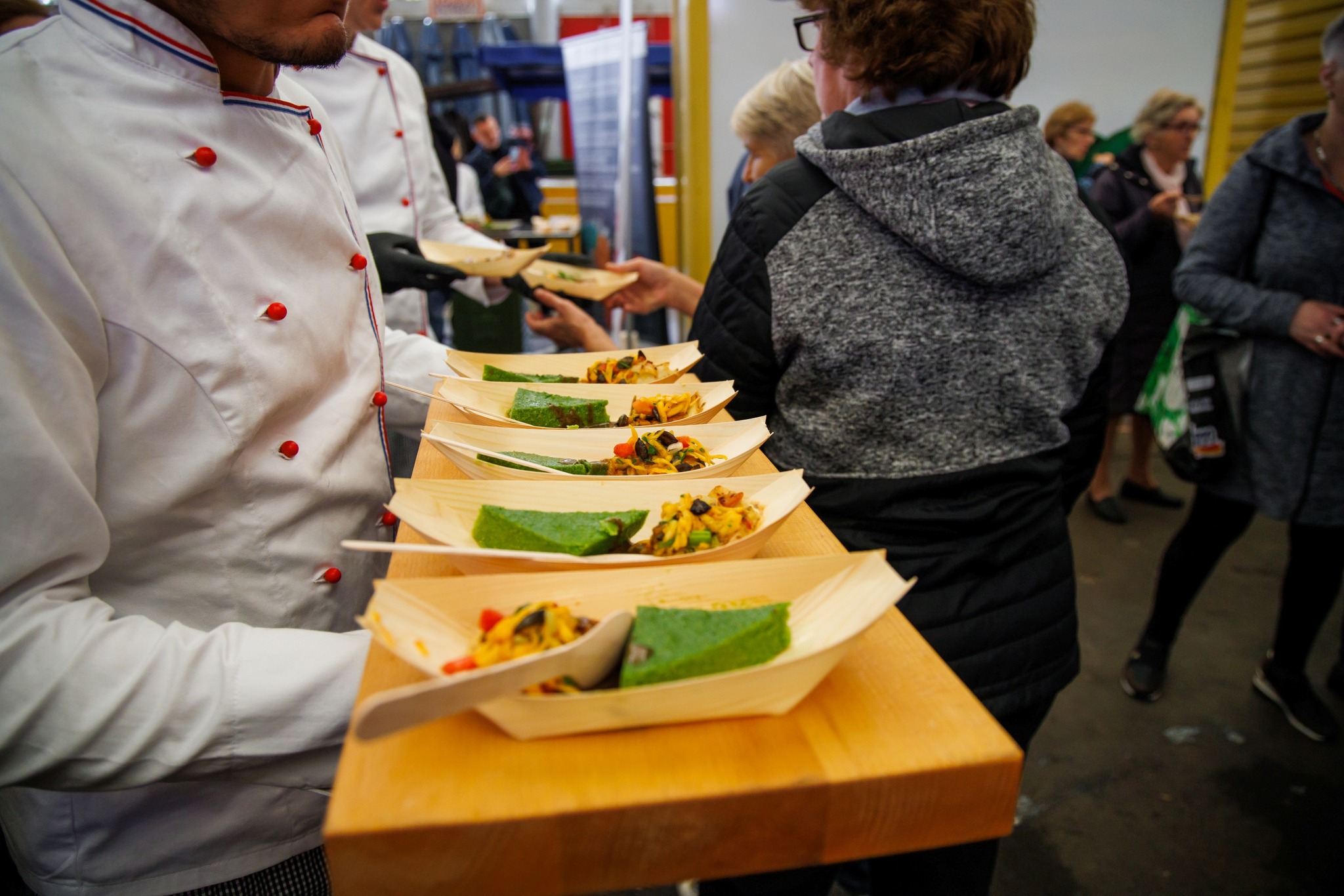
This year's theme was a royal one, with the main venues being the royal parks of Osijek, i.e., the parks carrying names of kings and queens. Our favourite was the one that hosted the Kingdom of Wine or KraljeVINA (wordplay in Croatian: Kraljevina = kingdom, and vina = of wine). Fun fact, with 17 parks (surpassing the number of squares), Osijek is known as the Green City or the City of Parks. And Head On East utilised that to create an atmosphere of warmth, familiarity, and joy, yet excitement for something new at every step.

From early morning on Friday until late at night on Saturday, something was happening. Workshops and theatre for the little ones, cook-offs and culinary classes at the market, art, education, wine tasting, local food, craft beer and gin, and live concerts. What impressed us the most was the thoughtful planning and organisation of the locations and events, which made heading on east dynamic and entertaining in a way you wouldn't necessarily think about. The parks felt like a little kingdom each but were all connected by the central theme, hedonism. And though something else was happening at every location, and all the events and crowds made it busy, the route was logical and made it easy to enjoy every aspect.
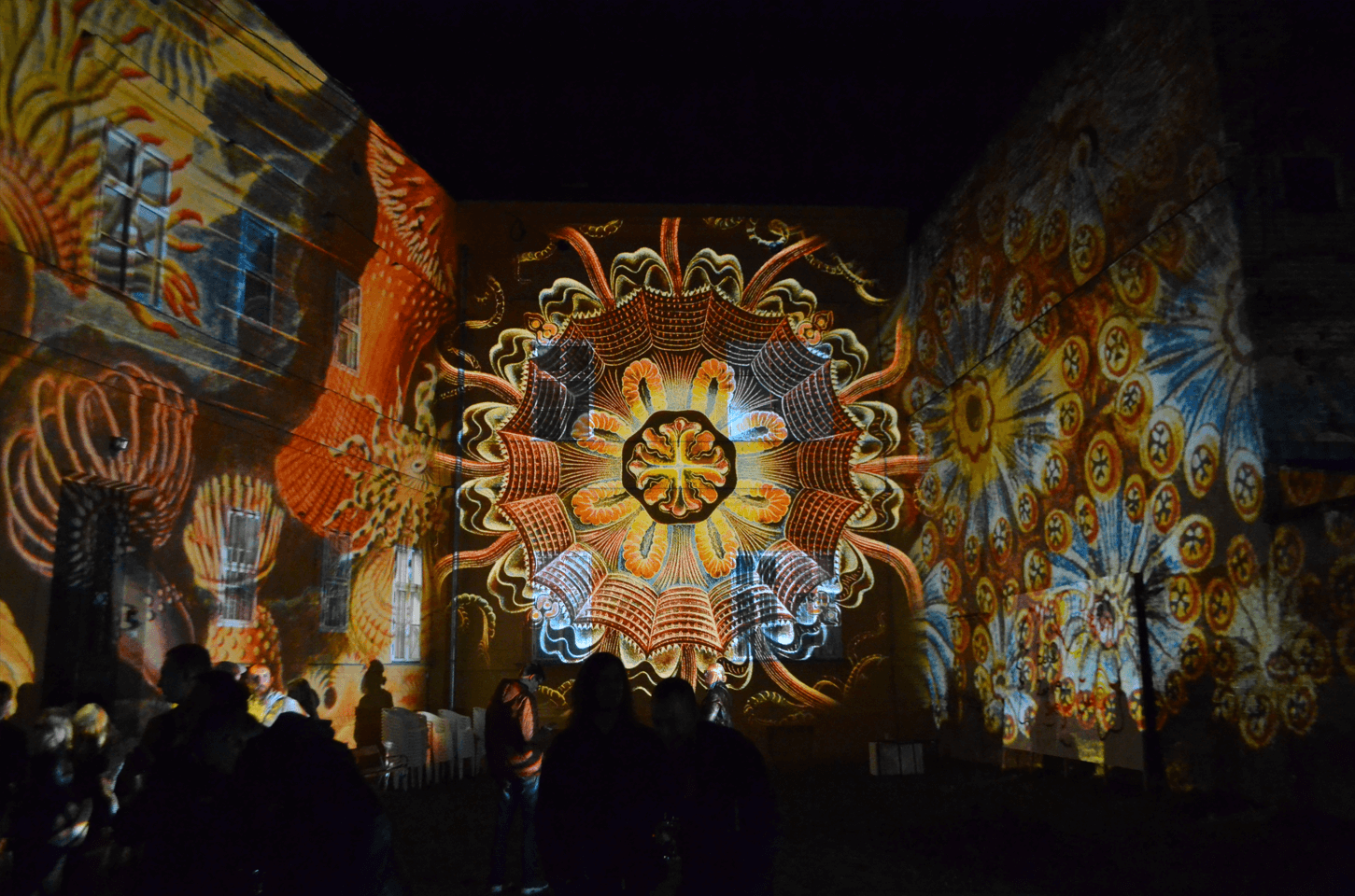
The light installations put up along European Avenue made the night simply magical. The fact that not only you could walk into the Museum of Fine Arts and look around while listening to a live jazz concert in its backyard but also try your hand at contributing to a painting while having a glass of local wine would probably make anyone suddenly start appreciating art that much more.
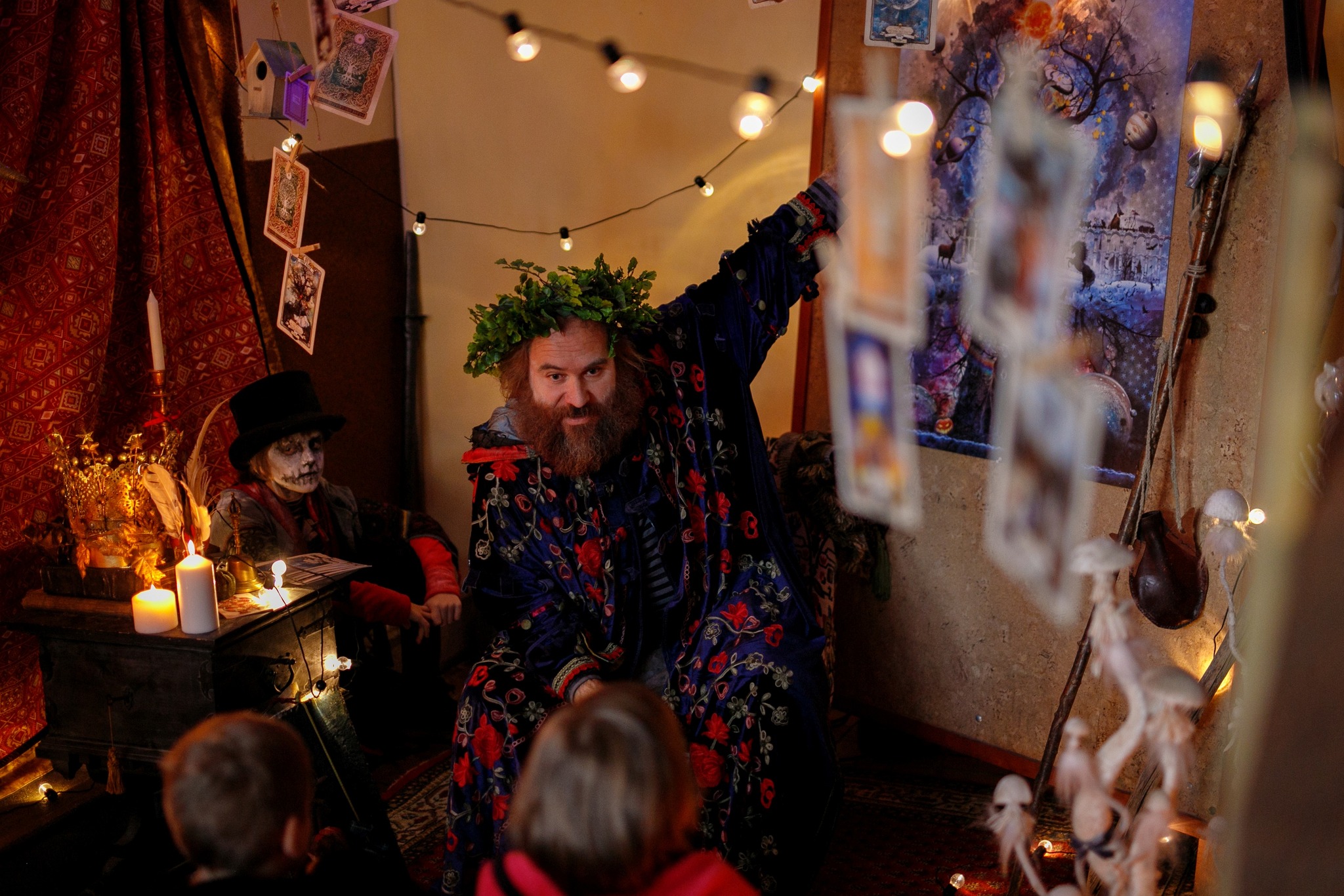
To quote Ivana Jurić, the director of Osijek-Baranja County Tourist Board, we invite you to come and experience the east of Croatia more. Head On East and discover what it's all about!
Photos are courtesy of Visit Slavonija Baranja Facebook page (Marko Banić / Osijek-Baranja County Archive).
For more, make sure to check out our dedicated Travel section.
Festivals in September to Look Forward to in Croatia
September 1, 2022 - Autumn in Croatia is possibly the most beautiful time of the year. The air begins to cool down, leaves begin to turn brown, life returns from the beaches to the streets. One of the bast parts is the festivals in September that take place all over Croatia, from Ilok to Dubrovnik.
Journal lists seven out of many festivals worth visiting. These events will take us on a cultural journey along and across Croatia.
Split Film Festival
The International New Film Festival will be held in Split from September 1 to 9, 2022. After last year's 'online edition', this year we will have the opportunity to watch films live again in the Karaman cinema. The twenty-seventh edition of the festival will once again show films in the feature and short international competition. The audience will have the opportunity to get to know the new films in the Croatian program, and a detailed overview of all screenings is available here.
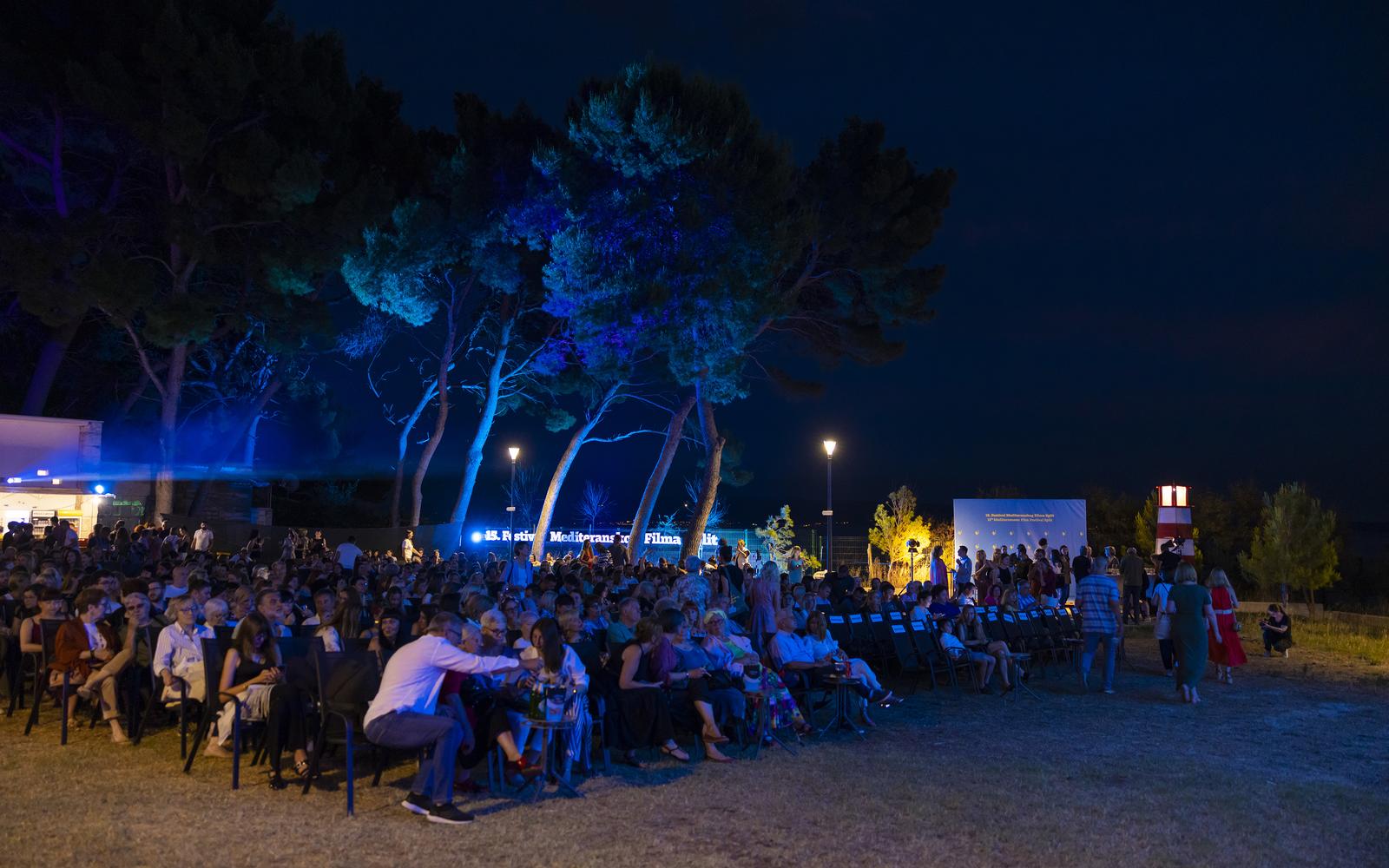
Milan Sabic / Pixsell
Dimensions Festival
On Thursday, the jubilee 10th edition of the Dimensions Festival starts, with which we traditionally say goodbye to the summer at The Garden resort in Tisno. The famous electronic music festival takes place from September 1 to 5, and for its jubilee, a real treat of a line-up is coming. You can check it out at this link.
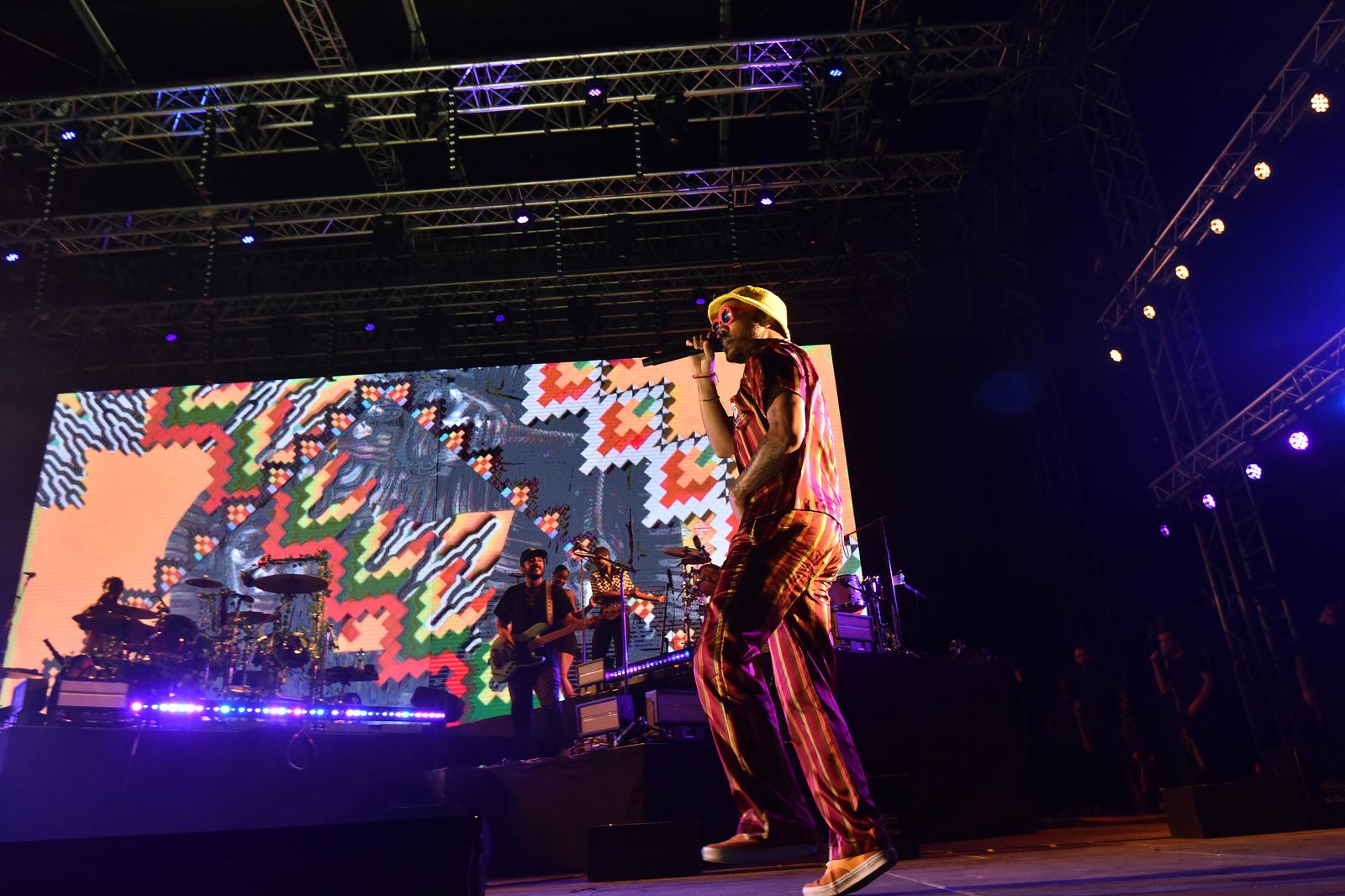
Dusko Marusic / Pixsell
Ogulin Fairytale Festival
This traditional cultural and tourist event will from September 9 to 11 make Ogulin a center of entertainment, good mood, fairy-tale creativity and a cultural program for children, youth and adults. This is an ideal opportunity for the whole family to spend quality time together and go to some of the festival scenes around the city with appropriate names - Regoč, Đulin vrt, Neva Nevičica, Stribor, Potjeh, Kosjenka and Domaći (characters from the fairytales of famous Croatian author Ivana Brlić-Mažuranić). The detailed program of the festival can be found here.
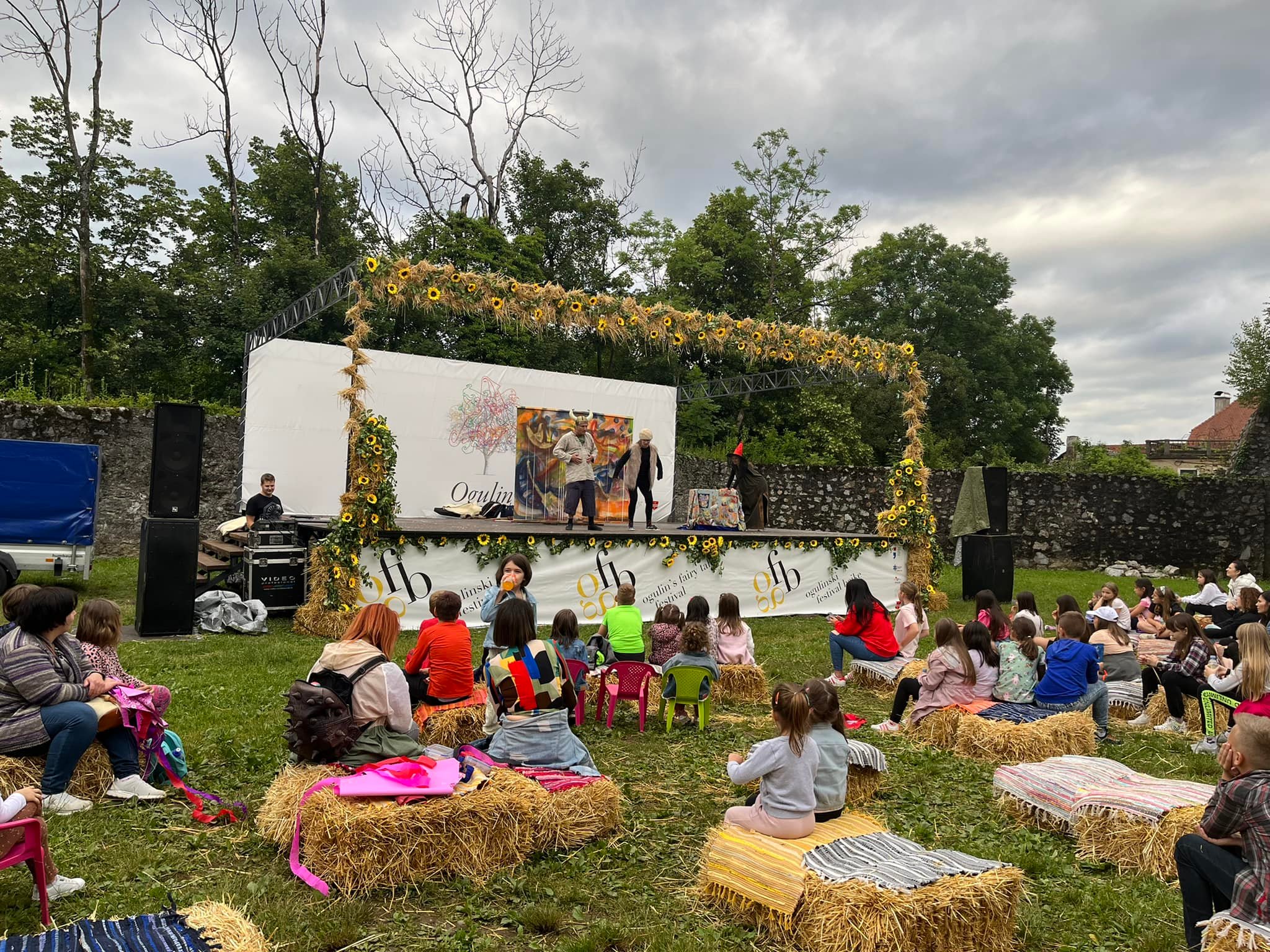
Ogulinski Festival Bajke
Four River Film Festival
Karlovac will host the 15th edition of the Four River Film Festival from September 6 to 10. It is an international festival intended for high school films. Along with it, the 27th Youth Film Festival will take place, which will feature works created by young people aged 14 to 20. The festival program can be found here.
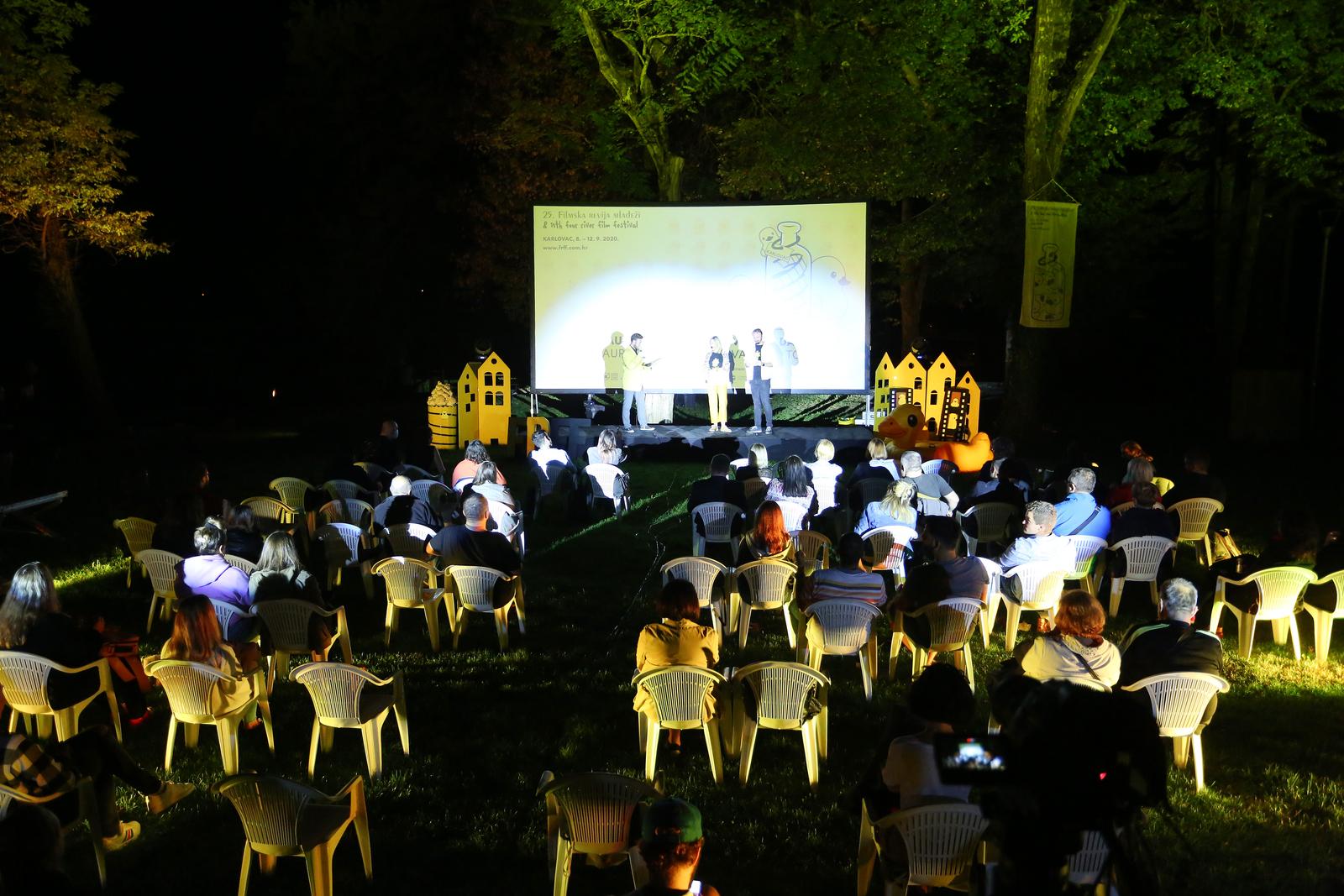
Kristina Stedul Fabac
Vinkovačke Jeseni (Autumn in Vinkovci)
September also brings the 57th edition of Vinkovačke Jeseni. Our tradition will shine in full glory from September 9 to 18, when the sounds of the tamburica will resound in Vinkovci, and the gathered guests will have the opportunity to see what lies beneath the golden Slavonian sun in early autumn. Detailed information about the event celebrating traditional culture is available here.
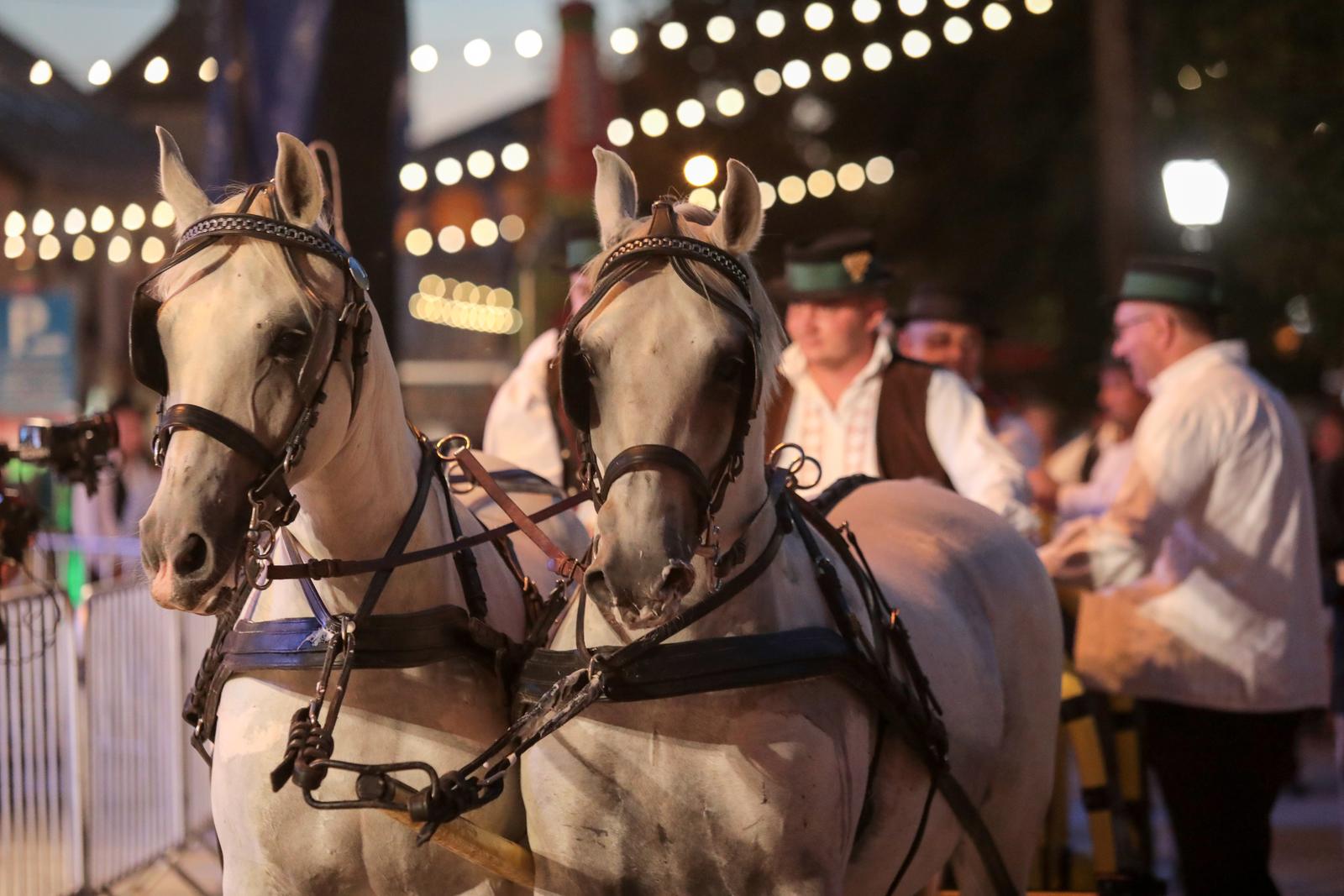
Dubravka Petric / Pixsell
Goulash Disko
From September 14 to 18, the island of Vis will host a special music festival - Goulash Disco. It is a festival that gathers artists who can be classified under the heading of underground music. In the description of the festival, it is pointed out that it combines "positive music, virgin nature and collective incredibleness". You can check the program of this year's edition of the festival here.
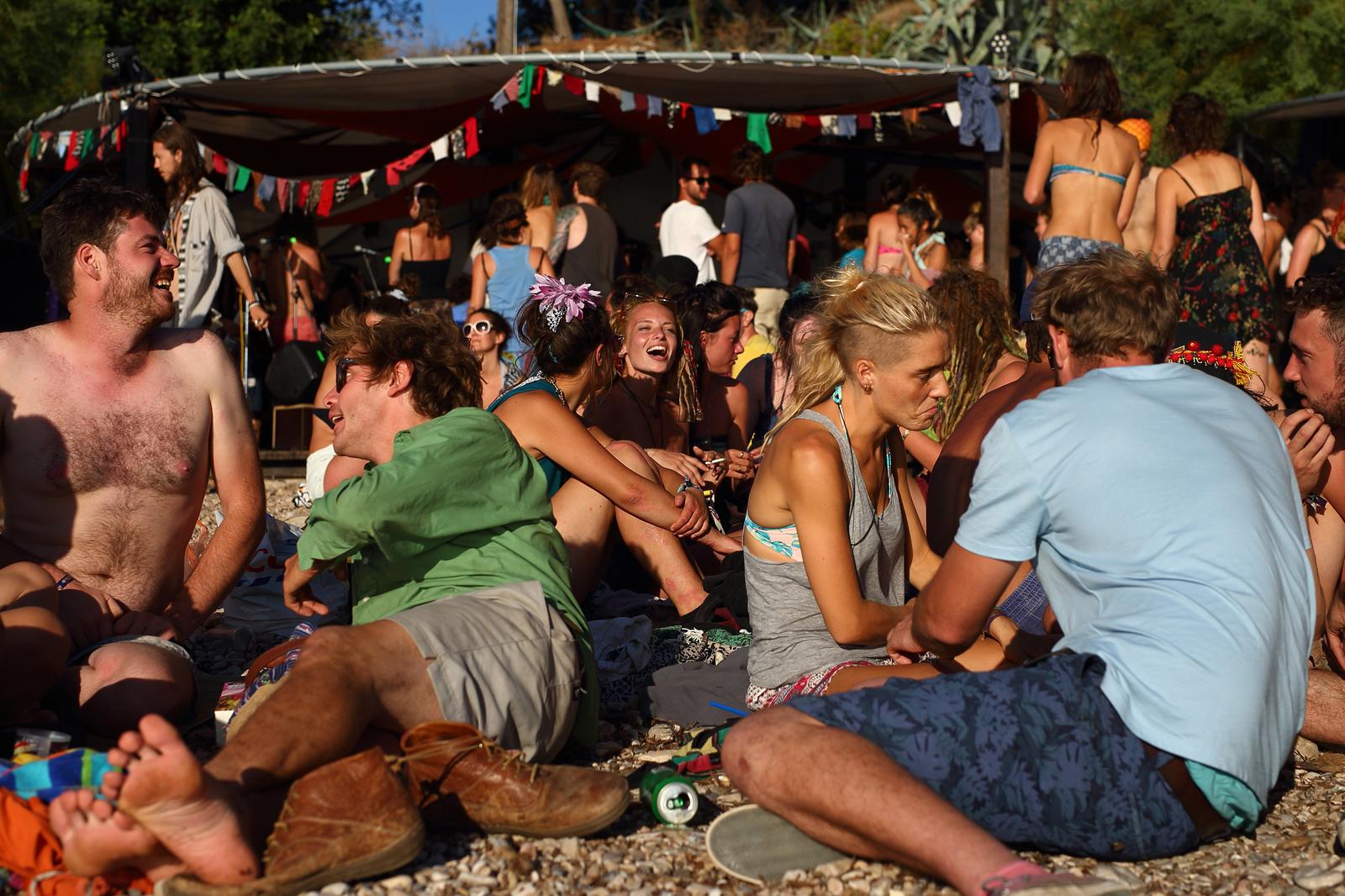
Zeljko Lukunic / Pixsell
International Puppet Theater Festival – PIF
The impressive 55th edition of the International Puppet Theater Festival will be held in Zagreb from September 16 to 22. During the seven days of the festival, we will have the opportunity to enjoy twenty professional and amateur puppet theaters and troupes, which perform shows for children and adults. The entire program of the oldest and largest international puppet theater festival in Croatia is available here.
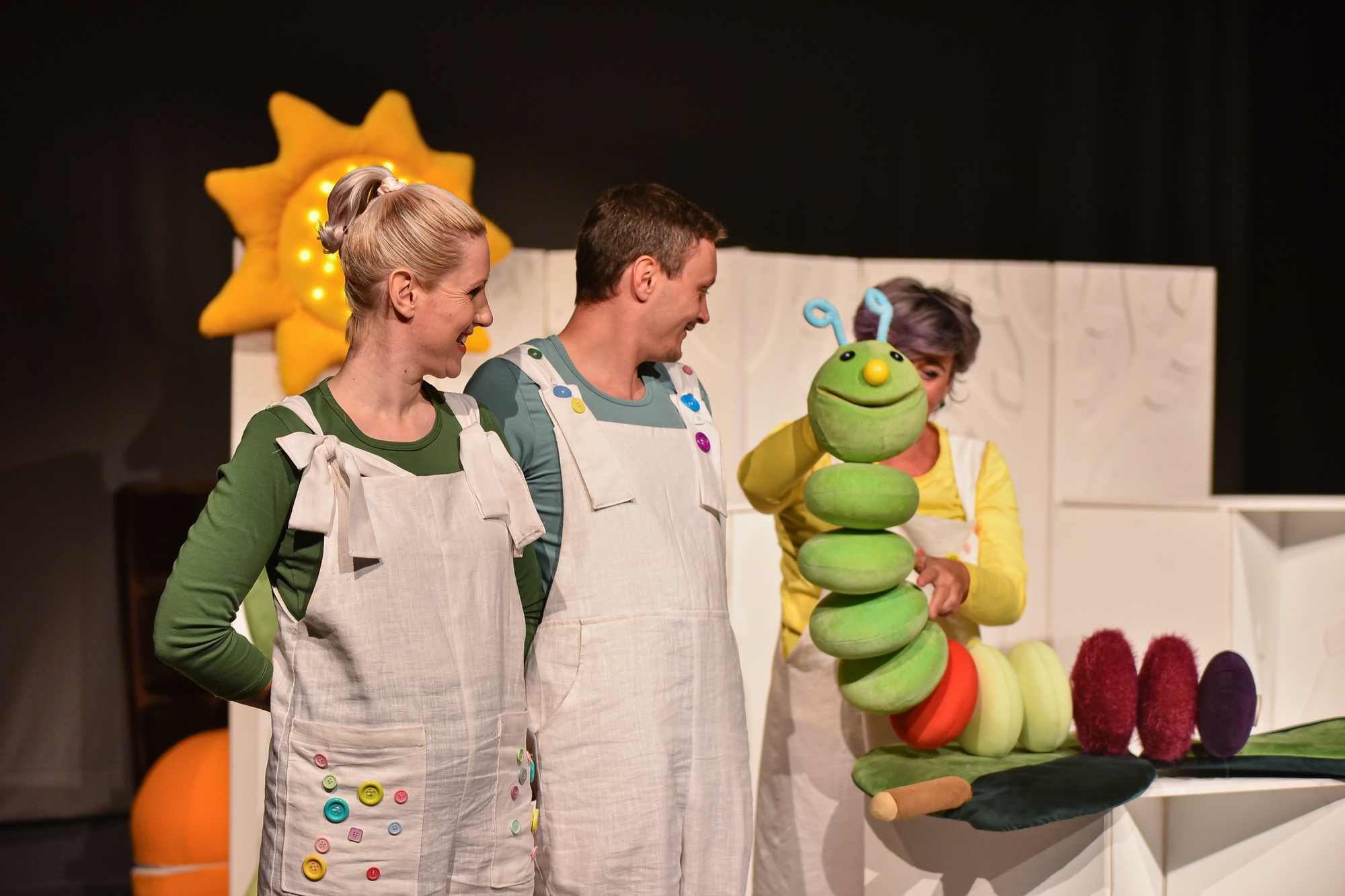
PIF
For more, make sure to check out our dedicated Travel section.
Brace Yourselves in Slavonia: Winter is Coming and Zimnica is Now
August 18, 2022 – Picture this. You live in Slavonia. You are 16, it is the height of summer, plans include swimming in the Danube all day and partying all night. Guess again. There’s more important business. It involves plums, apricots, tomatoes, peppers, maybe beetroots. And it’s not a very weird salad. You are now old enough to make your own zimnica.
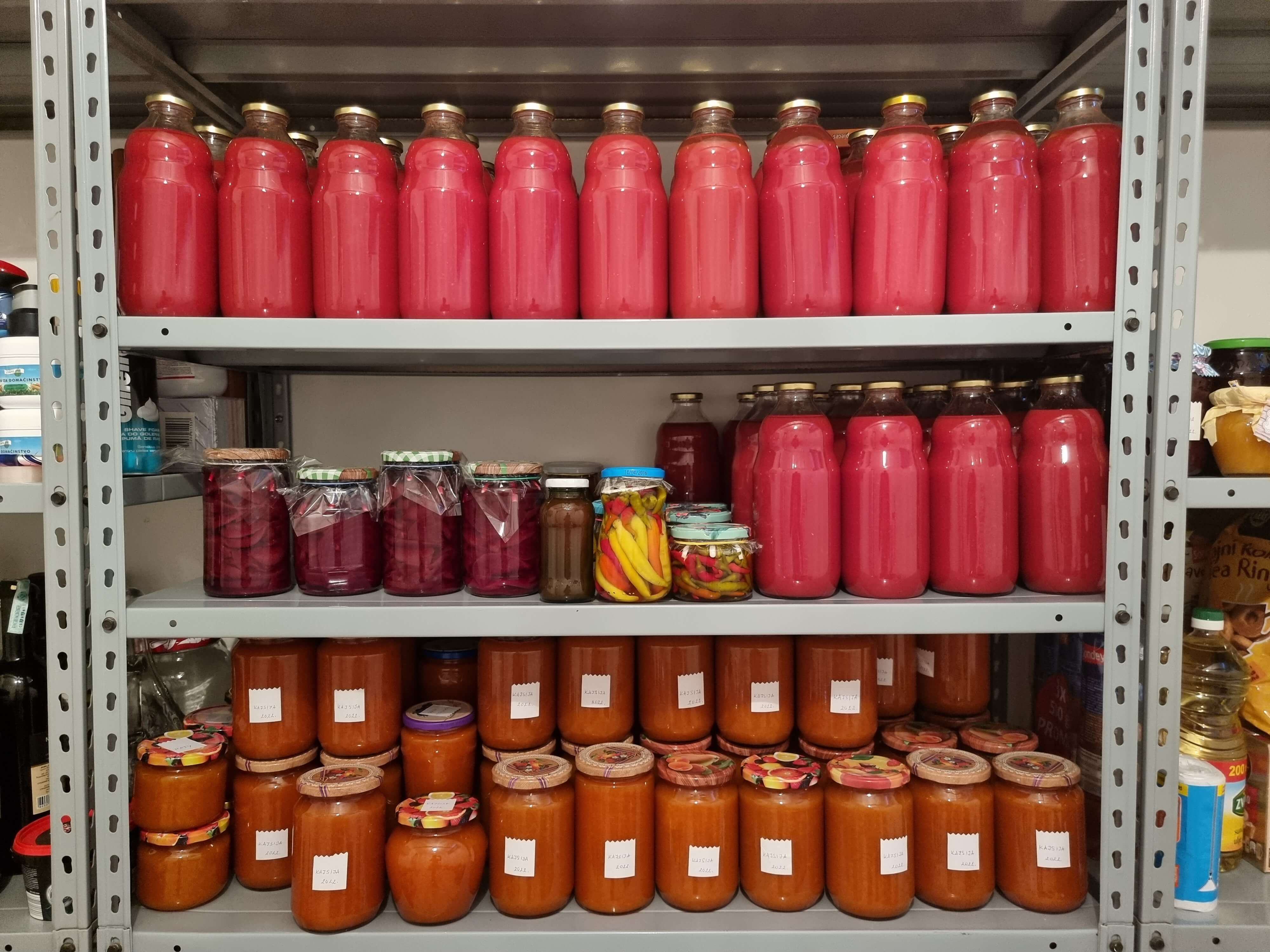
The winter staples - tomato passata, apricot and plum jam, pickled beetroots and peppers
While not a uniquely Slavonian event, zimnica, which is the Croatian word for anything that is kept specifically for the winter, plays an extremely important role in eastern Croatia. Preparing jars, bags, and dishes of fruits and vegetables for the winter is almost a form of art. Though things are different nowadays, winter in Slavonia used to be awfully long, cold, and dark, food was hard to come by, and it was of utmost importance to ensure that you preserved as much as you can. These days life is not as hard, and you can buy anything at any time, but the tradition does live on. Homegrown and homemade is always just so much better.
The preparations take place all summer long, as the fruits ripen, using various techniques. The most popular ones include pickling, jamming, and passing.
Pretty much any vegetable can be pickled using vinegar, salt, sugar, and water. The hierarchy of pickled vegetables is as follows:
1) Turšija is a mix of bell peppers, cauliflower, carrots, onions, and cucumbers, all pickled together in a plastic barrel. It takes top tier and gets served almost daily with all kinds of stews, meats, and even sandwiches, the adventure is in you.
1) Cabbage takes the same tier as turšija because it’s used to make a dish called sarma, which is the number one winter dish. It is almost mandatory to develop a love-hate relationship with it based on how often it’s made in Slavonian households.
2) Beetroots taste slightly sweeter, very red, never eaten while wearing white. Never frowned upon.
3) Solo whole bell peppers – neutral good, few hate them, few love them. Eaten if served, rarely an object of fear of missing out.
4) Other – like solo pickles, usually fetched when you run out of the good stuff.
5) Green tomatoes – now, that’s simply weird.

Just like any vegetable can be pickled, any fruit can be made into jam or rakija. Rare are jobs that are as annoying as picking up plums, apricots, peaches, pears, or apples from the ground and separating them into three buckets: good for jam, good for rakija, and good for nothing. The latter is usually completely rotten fruit, which is the most fun to pick up, and that bucket is taken to the back to be composted. The rakija bucket is dumped into a big barrel where the fruit is left to ferment, later distilled, and poured into the nicest bottles to be served on every occasion. Finally, the good fruit is eaten or used in cakes, but more importantly, jammed. There are a few different recipes for jam, depending on the fruit. The ubiquitous plum is treated as the queen and can be found in cakes, tašci, knedle, crepes, and on the breakfast table daily. Try the simple trick of cooking a large clay dish full of pitted plums with some sugar in the oven for a few hours and thank us later.
Now, you might wonder why one would go out and buy 250 kilograms of tomatoes on a Wednesday morning. Because that is market day, and the tomatoes went for a good price. And the ones from your garden were part of one too many salads. One of the most important ingredients of Slavonian cuisine is tomato sauce. Sunday lunch is unimaginable without a good broth, followed by the meat that was cooked in it served with some of the red velvety goodness. Tomato soup cures colds, cases of flu, and an array of other illnesses. It also makes for an incredibly easy and delicious dinner.
The process of preparing passata for the winter has a few steps. First, invite friends and family to help. This is a group job. Second, make sure that you’ve got some tools like a tomato press with a questionable origin, which you might or might not remember buying some 25 years ago. Even better if it’s your mother’s. Third, have some coffee. Fourth and final, work for 12 hours straight washing your tomatoes, cutting them, boiling, pressing, boiling again, bottling, and tucking for a cozy rest of 36-48 hours. Now you can rest easy knowing that you can store your 60 litres per household, getting through another long frosty winter in Slavonia.

Step no. 4
Traditional jam and tomato sauce are used in restaurants all over Slavonia and Baranja, where you can also try some of the dishes mentioned in the article, like tašci, sarma, and tomato soup. And that is just scratching the surface. Why aren’t you here?
How good is your knowledge of eastern Croatia anyway? Take the CROMADS test above - how many places do you recognise?
For more, make sure to check out our dedicated Lifestyle section.
Slavonia and Podravina, Wine Not?! Festival Announced
August 7, 2022 – September in Croatia is just the most beautiful time. For the best possible experience, in Virovitica-Podravina County they decided to make it wine month. Wine Not?
According to Press 032, the most anticipated wine event Slavonia and Podravina, Wine Not!? will once again gather lovers of wine, fine snacks, unique environment, art, and untouched nature on the famous Noble Route. The festival was announced in Orahovica, in the Patkoš boutique winery on the slopes of Krndija and Papuk.
The pink nocturne in noble dress in the unique Janković Castle on September 3 is the best introduction to as many as six exclusive wine events. A completely different experience awaits wine lovers on September 11 at a picnic in the beautiful Jankovac park forest of the Papuk Nature Park. Wine and art will be discussed on September 17 at Wine&Art in the Pejačević Castle in Virovitica, and on September 22 it’s all about Graševina in Dravska Priča in Noskovci. On September 24, a wine marathon will be held in Orahovica, followed by Wine and Poetry on October 1 in the Interpretation Centre – Petar Preradović's House.

Pexels (Taryn Elliott)
“I am extremely happy that after last year's events, more winemakers want to get involved in this beautiful story. Three criteria are decisive for the selection of wines to be tasted at the six wine events – top quality, all wines must be from the area of Virovitica-Podravine County and, of course, they must be available on the market”, noted the well-known oenologist Ivana Nemet, ambassador of the event Slavonia and Podravina, Wine Not!?
“In recent years, Orahovica has been developing in the direction of wine tourism. In our area, the green Silvanac produces excellent results, and we have become known in the wine world for that variety. I am happy that in addition to the famous PP Orahovica winery, we also have beautiful small boutique wineries with excellent wines that attract an increasing number of wine lovers to our city”, said Saša Rister, mayor of Orahovica, at the presentation of this year's manifestation Slavonia and Podravina, Wine Not!?
Martina Jakelić, director of the Virovitica-Podravina County Tourist Board, which in cooperation with the local tourist boards organises the six wine events, pointed out that this year's manifestation brings together important points on the Noble Route.
“For everyone who wants to be a part of this beautiful wine story, it is important to note that the number of places is limited, the registration fee for participation per event is HRK 100, except for the Wine Picnic in the Jankovac Forest Park, which will cost HRK 150, and the registration fee includes the rental of a picnic basket for two people. Registration forms and more information about the event can be found on the website of the Virovitica-Podravina County Tourist Board”, said Martina Jakelić.
For more, make sure to check out our dedicated lifestyle section.
Vukovar Ethno Fair Marks the Beginning of Autumn From September 24 to 26
September 19, 2021 - On the last weekend of September, locals and visitors will be able to welcome autumn in the best way at the Vukovar Ethno Fair, enjoying the best products, crafts, and traditions of the city.
From September 24 to 26, the city of Vukovar will hold its 14th Ethno Fair, in which the best of its local products, crafts, gastronomy, music, and folklore will be displayed, reports Turističke Priče. Both city residents and tourists will witness the arrival of autumn feeling the true essence of Vukovar and its people.
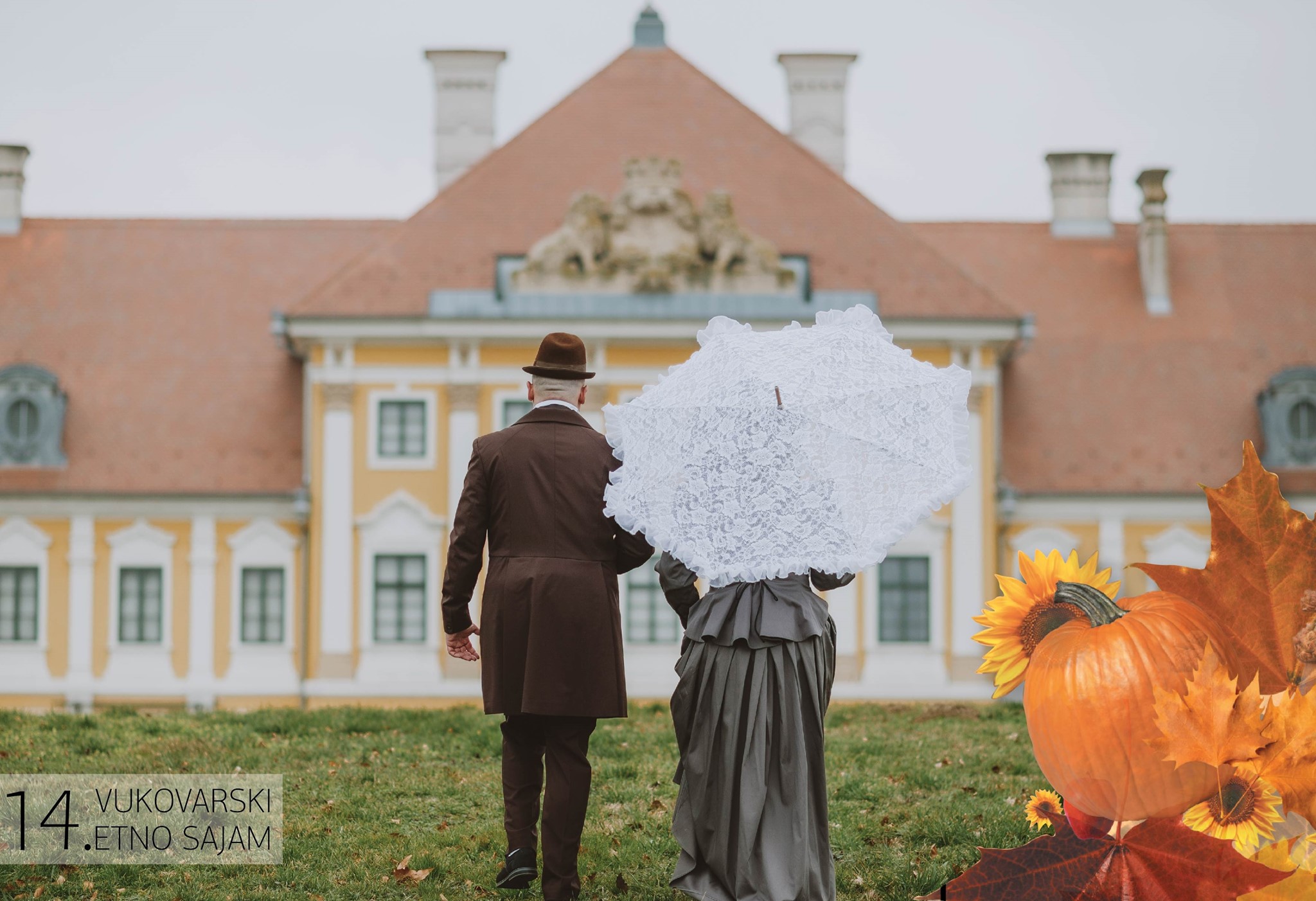
(Photo: Vukovar Tourist Board Official Facebook Page)
The focus will again be on the fair of traditional products and arts and crafts, handicrafts and antiques, and food and beverage producers, where products and services are exhibited by producers from the entire Vukovar-Srijem County, but also Croatia.
We believe that in the three days of the fair, everyone will find something for themselves. Children will be able to participate in one of the five announced workshops in which they will make wooden toys, flower wreaths, shape clay…
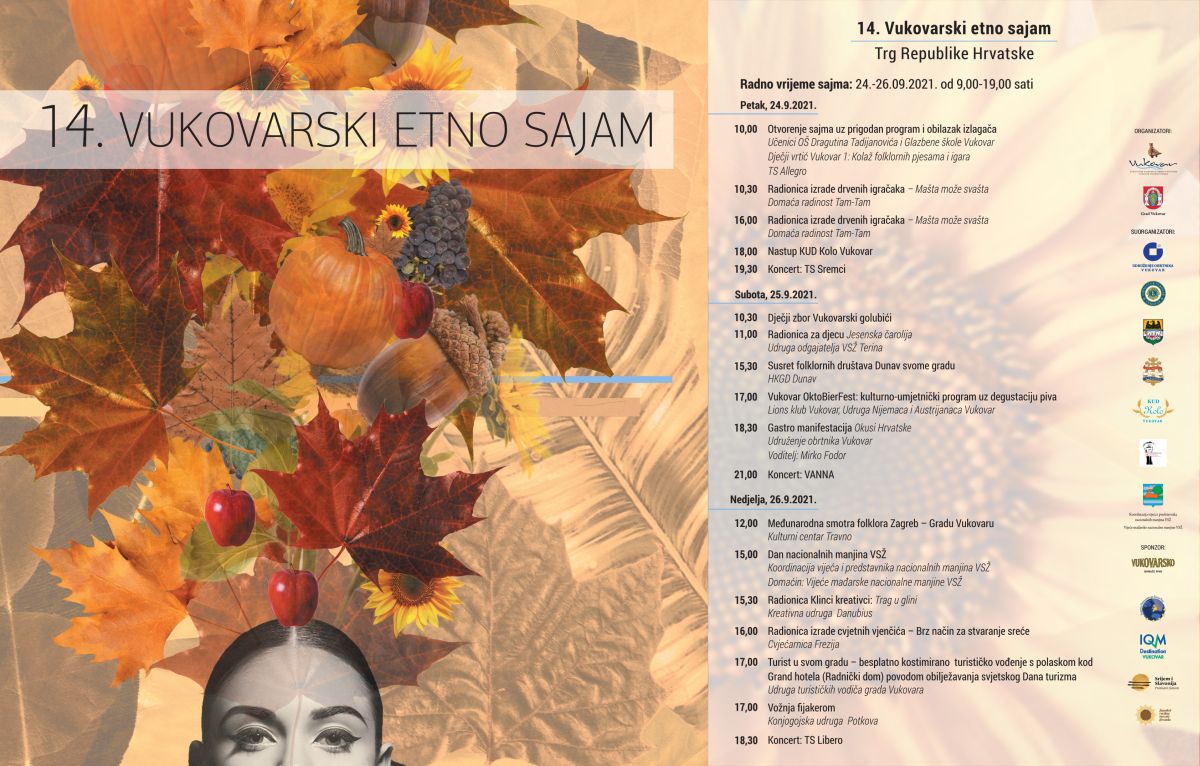
(Photo: Vukovar Tourist Board Official Facebook Page)
Lovers of tradition will enjoy the richness of folk costumes and performances by cultural and artistic societies, both domestic and guest. Namely, after the performance of KUD Kolo from Vukovar on Friday, the Croatian Cultural and Cultural Music Society Danube will host on Saturday the traditional 13th Meeting of folklore societies "The Danube to its city". On Sunday, the folklore part of the Fair will be rounded off by the "International Folklore Festival Zagreb - City of Vukovar".
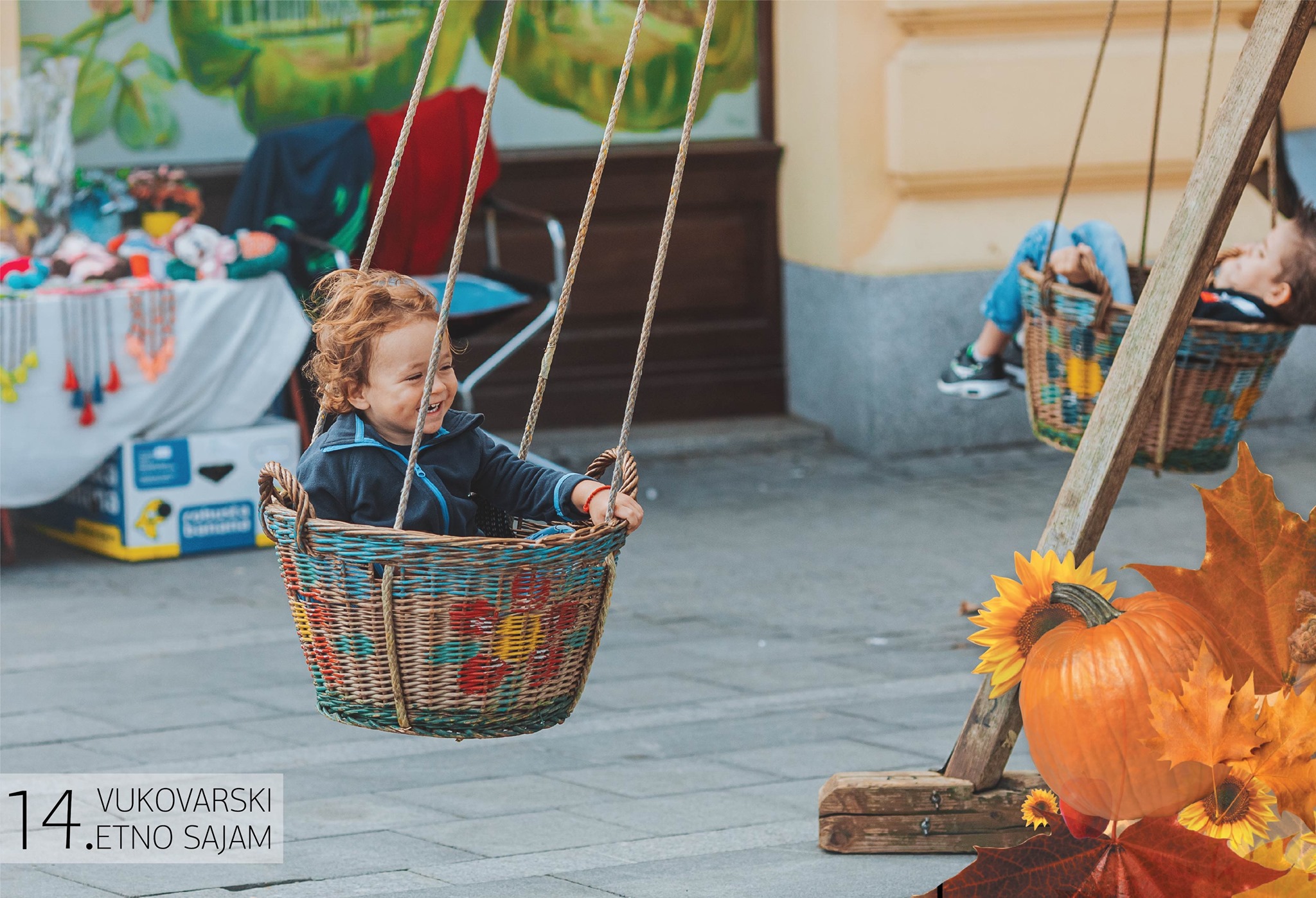
(Photo: Vukovar Tourist Board Official Facebook Page)
In Vukovar, you will be able to try gastronomic specialties from all over Croatia, as part of the fifth gastronomic event "Tastes of Croatia", but also to refresh yourself with Vukovarsko and other beers with a cultural and artistic program with beer tasting on the "Vukovar OktoBierFest".
The music part of the program of the Vukovar Ethno Fair will be opened on Friday by tamburitza players, the Tamburitza ensemble Sremci, and on Saturday visitors will be able to enjoy the performance of the popular and favorite Vanna. Tamburitza players will play on the last evenings of the Fair, but this time visitors will be entertained by the band Libero.
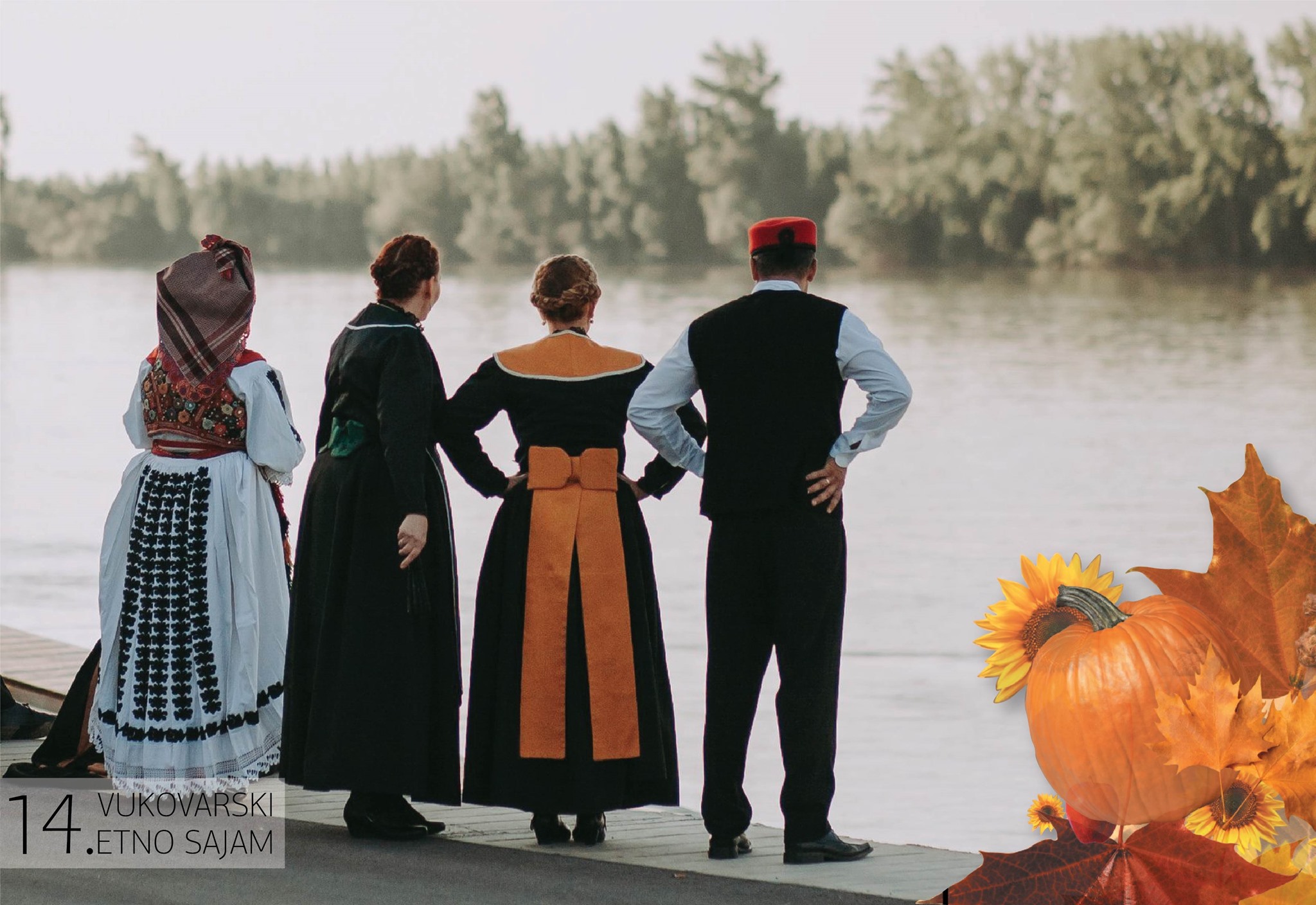
(Photo: Vukovar Tourist Board Official Facebook Page)
On Sunday, September 26, as part of the Vukovar Ethno Fair, the Day of National Minorities of Vukovar-Srijem County will be marked. On the occasion of World Tourism Day, the Guides Association organizes a city tour on the same day, accompanied by costumed guides called Tourist in their city.
Therefore, book the last weekend in September for Vukovar, which always offers you more than you expect.
To learn more about the city of Vukovar, visit Total Croatia's complete guide, Vukovar in a page. Now in your language!
For more, check out our dedicated travel section.
16th Ogulin Fairy Tale Festival Starts Its Autumn Edition Today
September 10, 2021 - Festivals are not exclusive to spring and summer, and especially when the weather in Croatia continues to be pleasant in the first weeks of September, autumn has a select variety of events and places to visit. One of them is the 16th Ogulin Fairy Tale Festival, which starts today and lasts all weekend.
There is a city in Croatia where characters from fairy tales and legends gather. The town of Ogulin is known as the most fairytale town in Croatia and beyond. Turisticke Price reports that, for the sixteenth year in a row, the Ogulin Fairy Tale Festival will be held, where both children and adults can enjoy fairy tales and fairytale works by artists from all over Croatia all weekend long. This is the time when characters from fairy tales take to the streets of Ogulin and hang out with visitors for three whole days.
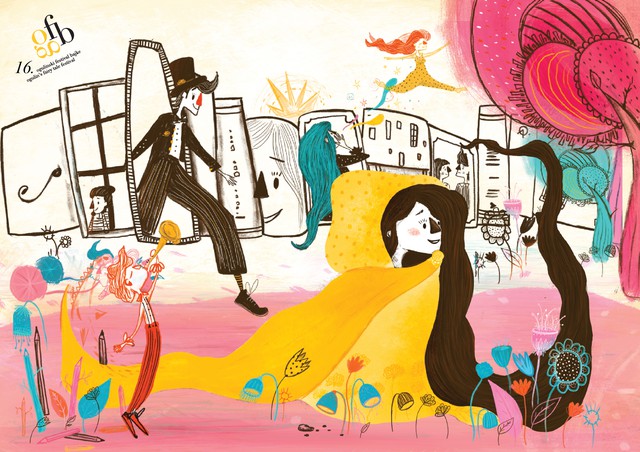
(City of Ogulin Tourist Board)
The main part of the program of the 16th Ogulin Fairy Tale Festival is performances of cultural, educational, and entertainment content and the telling of fairy tales by various performers from all parts of Croatia and the world. In addition, there are various art, creative and technical workshops, dance performances, animation programs, concerts, sports events, and from this year, film screenings of films intended for the youngest and a music program.
Visitors can also see certain exhibitions, including exhibitions of birds and small domestic animals. And as befits a festival, there is an offer of various desserts and stands with local products, handmade items, souvenirs, and more.
(City of Ogulin Tourist Board)
You may be wondering how and why Ogulin got the "title" of the most fairytale city? This is due to the beautiful nature of the Ogulin area. As soon as you approach Ogulin, you will see Mount Klek, which looks like a sleeping giant and to which many legends are attached. In the very center of the city is the Frankopan castle, and across from it is Đulin's abyss, and in the background lies the giant Klek. In addition, there are beautiful forests, hills, meadows, fields, caves, rivers, lakes and other beauties.
This beautiful and mystical nature was the inspiration for Ivana Brlić-Mažuranić, the most famous Croatian writer for children who were born in Ogulin. Stories from antiquity is a special collection of her fairy tales that have remained in the wonderful memory of many generations precisely because of their beauty, originality, timeless instructiveness, and whose characters walking through Ogulin you can imagine and see, you just have to awaken your imagination and children's curiosity.
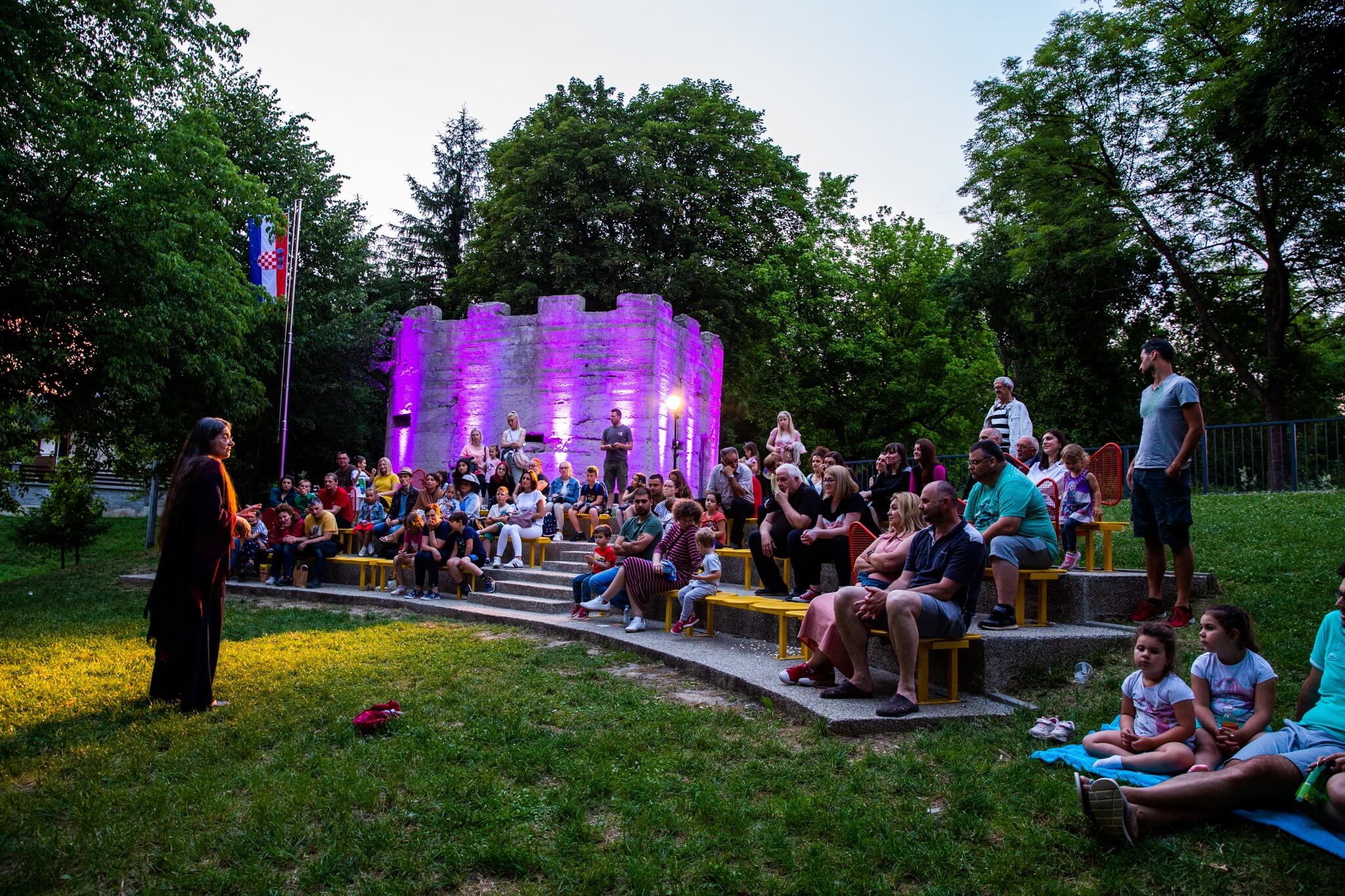
(City of Ogulin Tourist Board)
Ogulin Fairy Tale Festival is an event that is held every year, and this year in two editions: the second weekend in June and the second weekend in September. Due to the epidemiological situation, all the contents take place in the open space in the very center of the city on several scenes bearing the names of characters from the fairy tales of Ivana Brlić-Mažuranić.
The September edition of the 16th Ogulin Fairy Tale Festival will take place from September 10 to 12, and you can find the program at the following LINK.
For more, follow our travel section.
PHOTOS: Plitvice Lakes in Autumn Tones Create Beautiful Contrast
October 26, 2020 – On this day 41 years ago, Plitvice Lakes was included on the UNESCO World Heritage List. A look at the famous park in late October when it is covered in autumn tones.
One of the most beautiful natural sights in Europe and definitely a must-visit place in Croatia, Plitvice Lakes National Park, is known for its magnificent travertine barriers that create 16 clear lakes separated by the numerous cascading waterfalls.

Although Plitvice Lakes are known for the crystal clear water of lakes and green vegetation, in autumn their appearance turns into a real colorful landscape due to the yellow and orange leaves of the surrounding treetops.
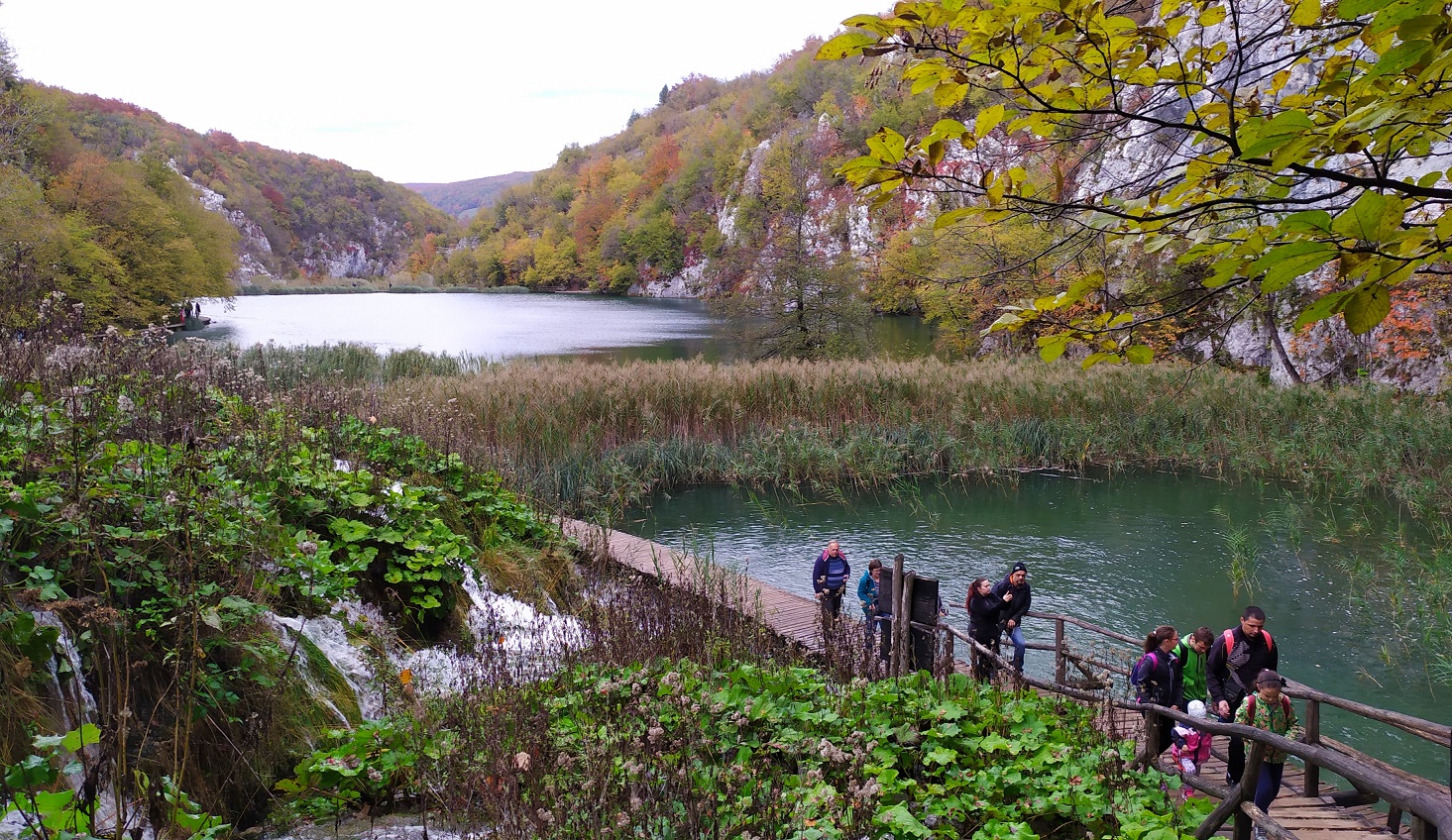
Plitvice Lakes are located in the Korana River valley where the travertine barriers block it, and the area of the national park stretches through Karlovac and Lika-Senj counties. Whether it is spring, summer, autumn, or winter, Plitvice Lakes exude their unique beauty at any time of the year, and autumn stands out as it creates a beautiful contrast between the orange leaves of the deciduous forest and the clear green waters of lakes.
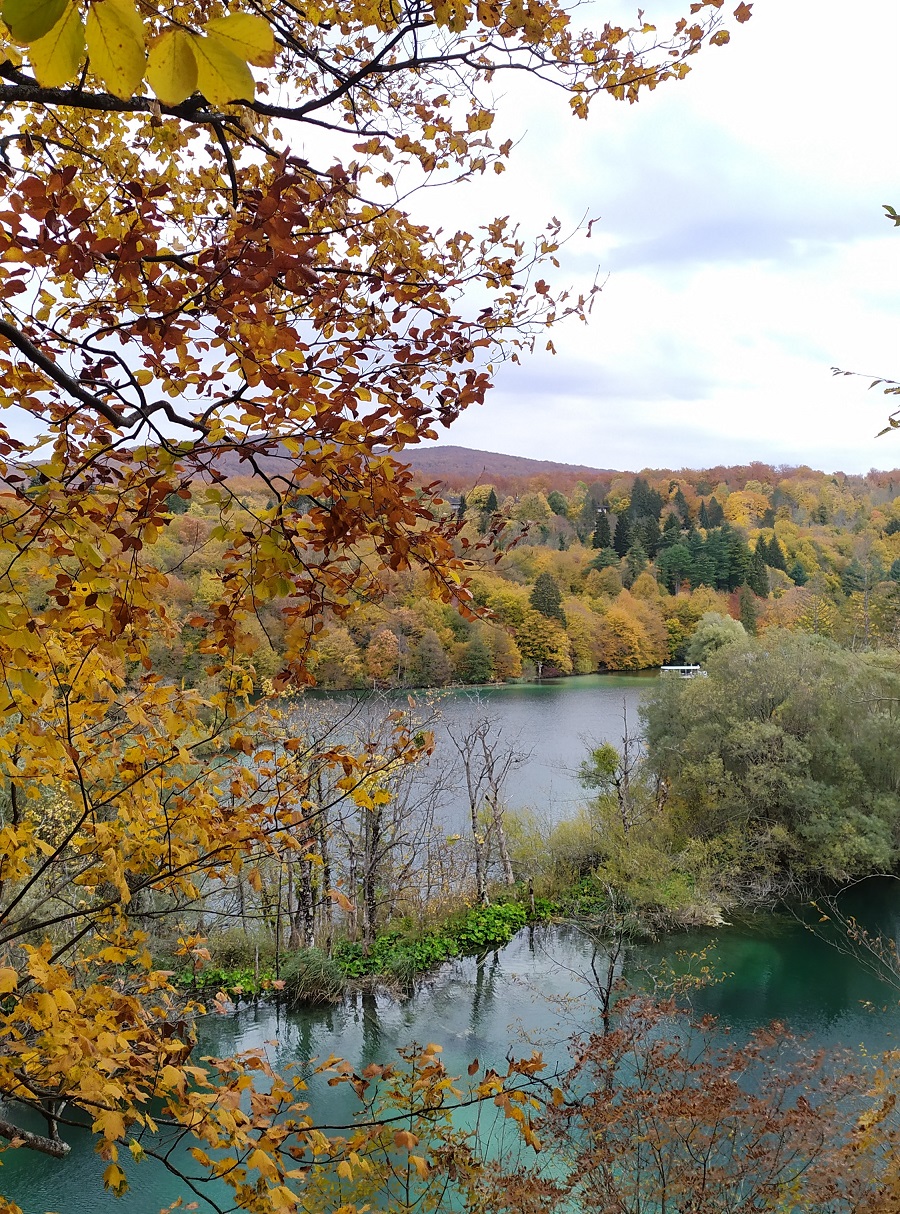
Anyone who visits Plitvice at this time of the year will not remain indifferent walking the wooden paths watching the waterfalls that make their way through the diverse vegetation. The lakes are now filled by the contrast of variegated deciduous treetops and clear lake water, as well as the contrast of fast and loud waterfalls defying calm parts of lakes.
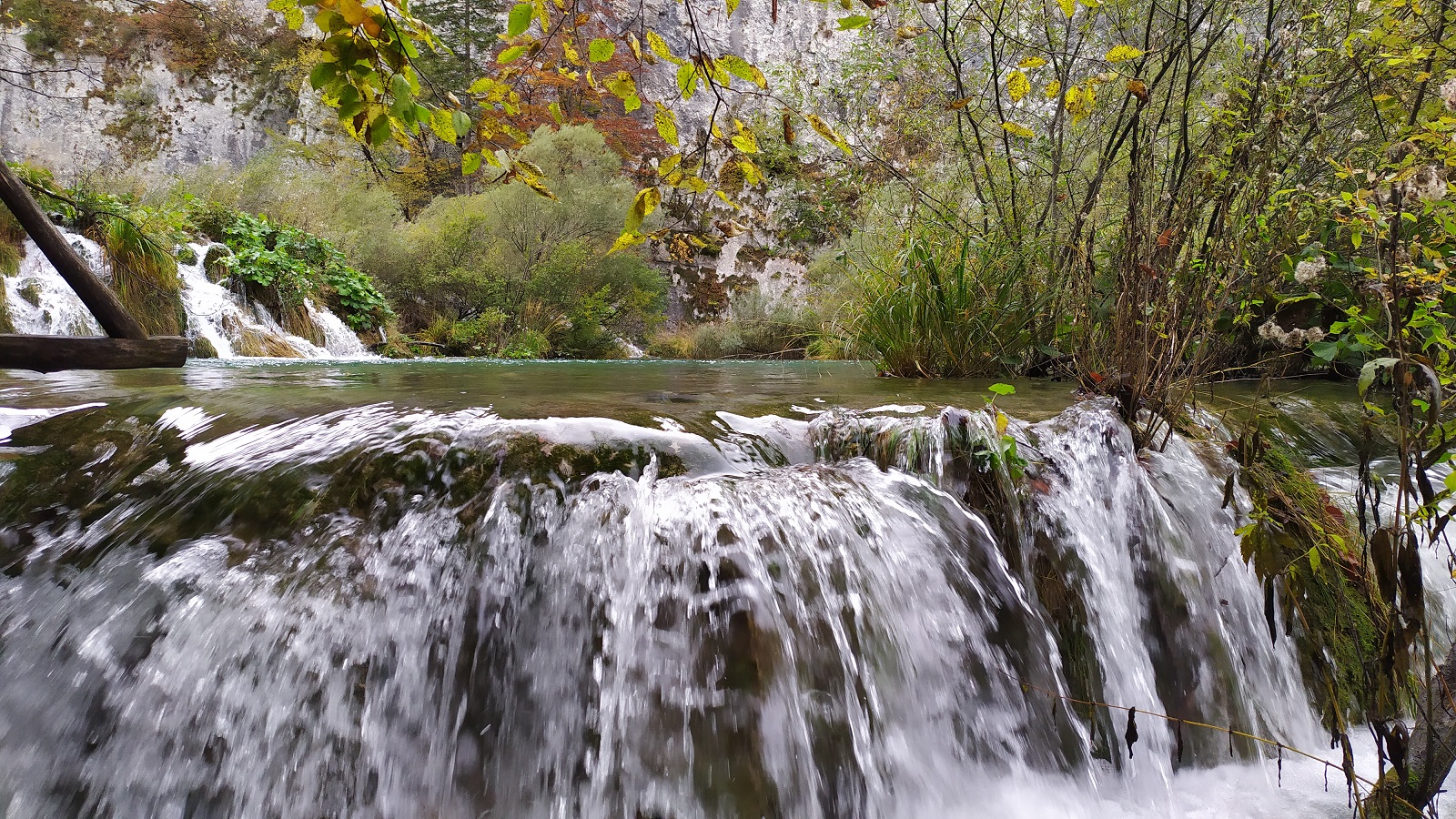
A boat ride on the largest lake Kozjak and a train ride on the hilly part of the park allow visitors to even better observe and absorb the coexistence of lakes, forests, and plants. This time of the year, yellow and brown leaves cover wooden paths and edges of lakes where ducks and fish freely swim.
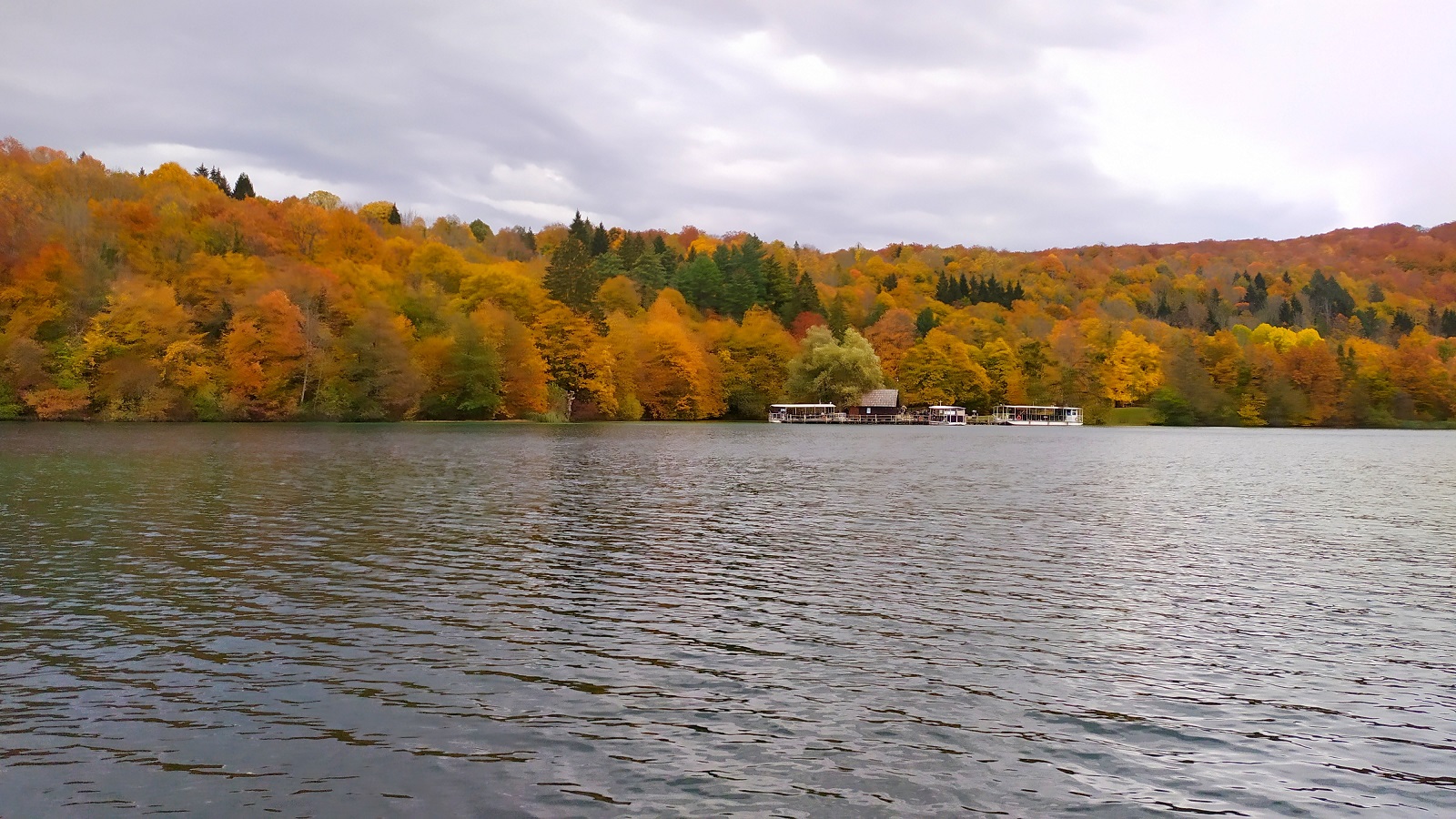
The natural process of travertine is responsible for Plitvice's shape since travertine barriers create lakes and waterfalls, which is why this colorful paradise was included on the UNESCO World Heritage List on this day 41 years ago, but also because of its well-preserved forest and rich fauna.
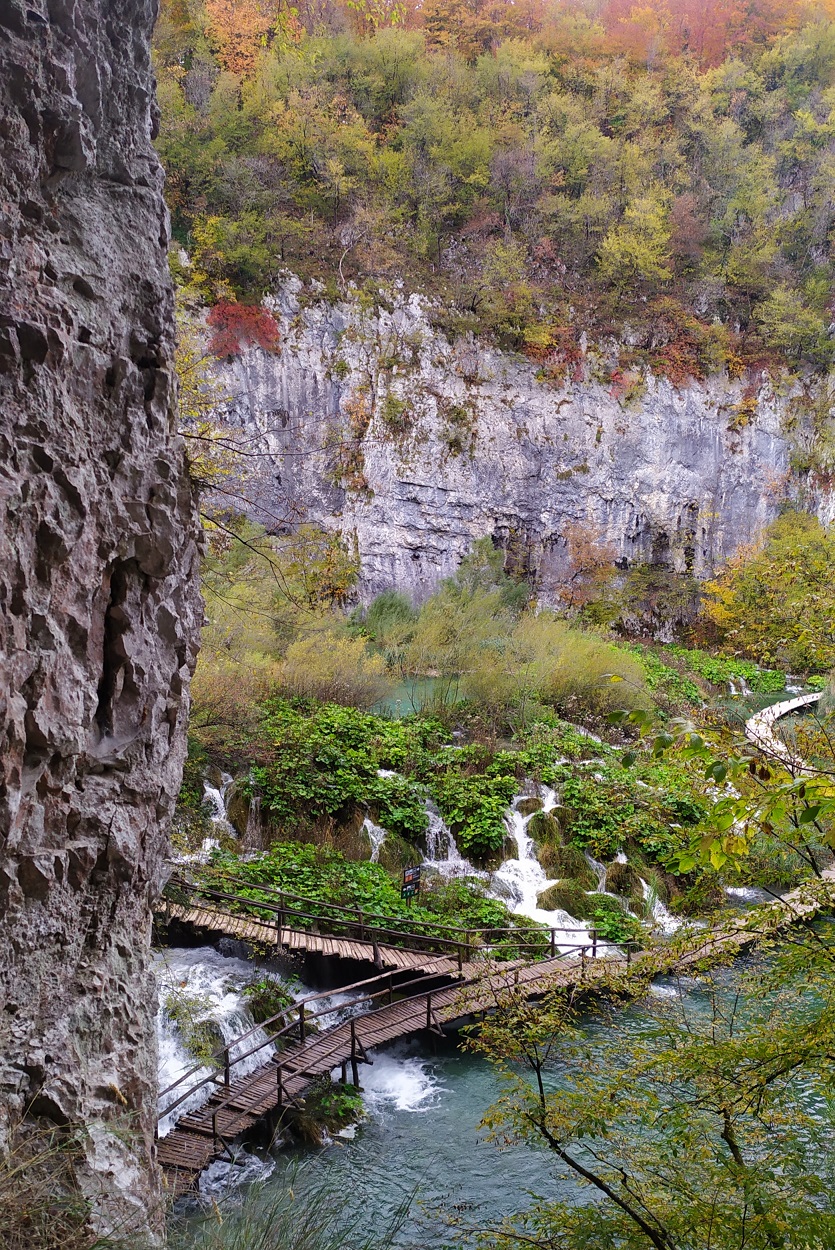
The first and the biggest Croatian national park, Plitvice Lakes was placed on the World Heritage List as the only natural heritage at the time. Today this list counts as many as 1121 world heritage sites, and 213 as natural heritage.
Alongside Plitvice Lakes, the natural heritage under UNESCO protection in Croatia consists of two more national parks – Paklenica and Northern Velebit, and a group of rocky peaks of Velebit called Hajdučki and Rožanski kukovi made the list too. They are all part of UNESCO's Ancient and Primeval Beech Forests of the Carpathians and Other Regions of Europe.
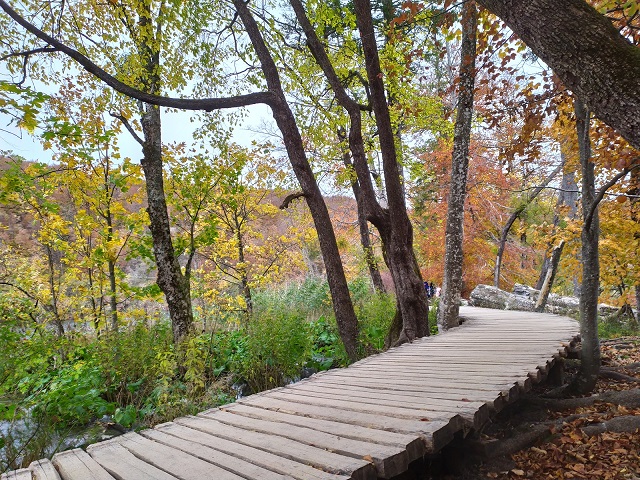
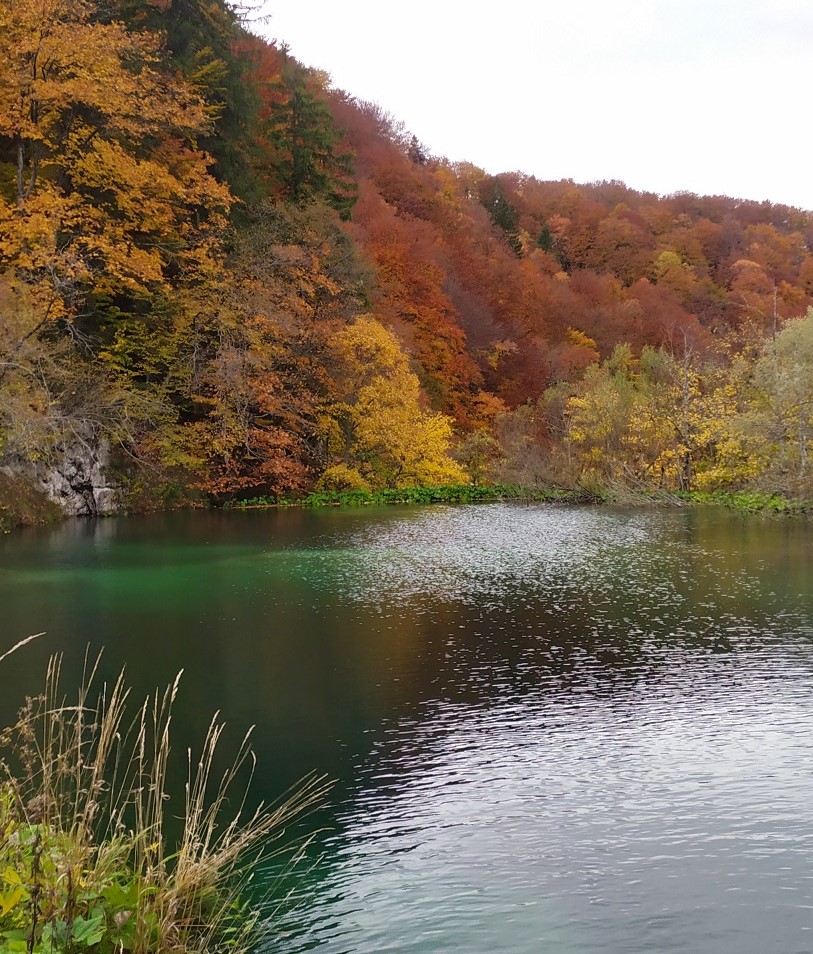
The Croatian region of Lika, where Plitvice Lakes and all other UNESCO nature sites in Croatia are located, proves to be rich with natural heritage that is unique in Europe and is worth visiting when in Croatia.
All photos © Donatella Pauković
For the latest travel info, bookmark our main travel info article, which is updated daily.
Read the Croatian Travel Update in your language - now available in 24 languages.
Celebrating All Things Autumnal in Oprtalj With Kestenijada
Eleven years ago, Oprtalj in Istria started a new story with which it wanted to present a natural resource that has since become not only valuable, but a recognisable symbol of the town itself.
''I'm grateful to everyone who participates in the organisation because we're one small municipality, count that we have six employees here and over fifty people turned up to make sure the event succeeded,'' said Oprtalj's Alexander Krt.
As Glas Istre/Gordana Calic Sverko writes on the 14th of October, 2019, when it comes to the noble chestnut from the chestnut forests dotted around in the vicinity of the picturesque Istrian town of Oprtalj, Kestenijada's hosts will say, with quite some bias, that they're admittedly smaller in size, but therefore much sweeter than usual.
Seen as a valuable indigenous resource, in recent years, the chestnut has experienced a gastronomic ''rebirth''. Owing to that, a truly unique Istrian event centered on the chestnut, a favourite autumn treat in all variants, both roasted and cooked and savory, began. While in Lovran they celebrate Marunada, in Oprtalj they hold Kestenijada. The native forest chestnut belonging to the European chestnut genus of the Latin name Castanea sativa has thus become a trademark of Oprtalj.
For this year's eleventh edition of Kestenijada in Oprtalj, the hosts prepared about a ton and a half to two tonnes of chestnuts, of which about 500 kilograms were being sold at two stands of the Oprtalj municipality, where a kilogram of chestnuts was sold for 30 kuna each, and a measure of roasted chestnuts at 15 kuna.
The chestnut season in the Istrian north is late this year, and weather conditions have caused it. The chestnuts themselves, though, have begun to mature, and the right season, as Edo Vizintin from Oprtalj explained, is expected next week. The heavily forested areas of the northwestern part of the Oprtalj municipality are mostly private and the locals are concerned that they are being overrun. The trees are drying out and they will need to find a way to protect them as efficiently as possible.
''With the aim of valorising the natural resources of the Oprtalj area, Kestenijada was initially started by the Oprtalj Tourist Board, which, with this year's sponsorship of the Municipality of Oprtalj and Istria County, provided plenty of entertainment and events surrounding gastronomy. It is the only manifestation in Istria that celebrates only chestnuts,'' says Prodan Mraković.
''For a number of years now, Istria County has been encouraging, organising and co-financing events, generally pre-season and post-season events such as Kestenijada in Oprtalj to motivate guests to come in the post-season when Istria has something to offer. The results from even as far as a decade or so back, confirm that we're heading in the right direction, since both before and after the main tourist season they have increased numerically from 20 to 25 percent in arrivals and overnight stays, which means that we're shifting our focus slightly from the sun and the sea to Istria as a lifestyle and gourmet destination,'' added Prodan Mraković.
Make sure to follow our dedicated lifestyle page for much more.
Dubrovnik's Autumn Tourism Boom: October Brings Great Results!
Summer destination? Time to ditch that dated label.
Autumn in Croatia: Join the Olive Harvest
October in Croatia may mean the end of summer and holidays to most but to some it means something else – olive harvest.


